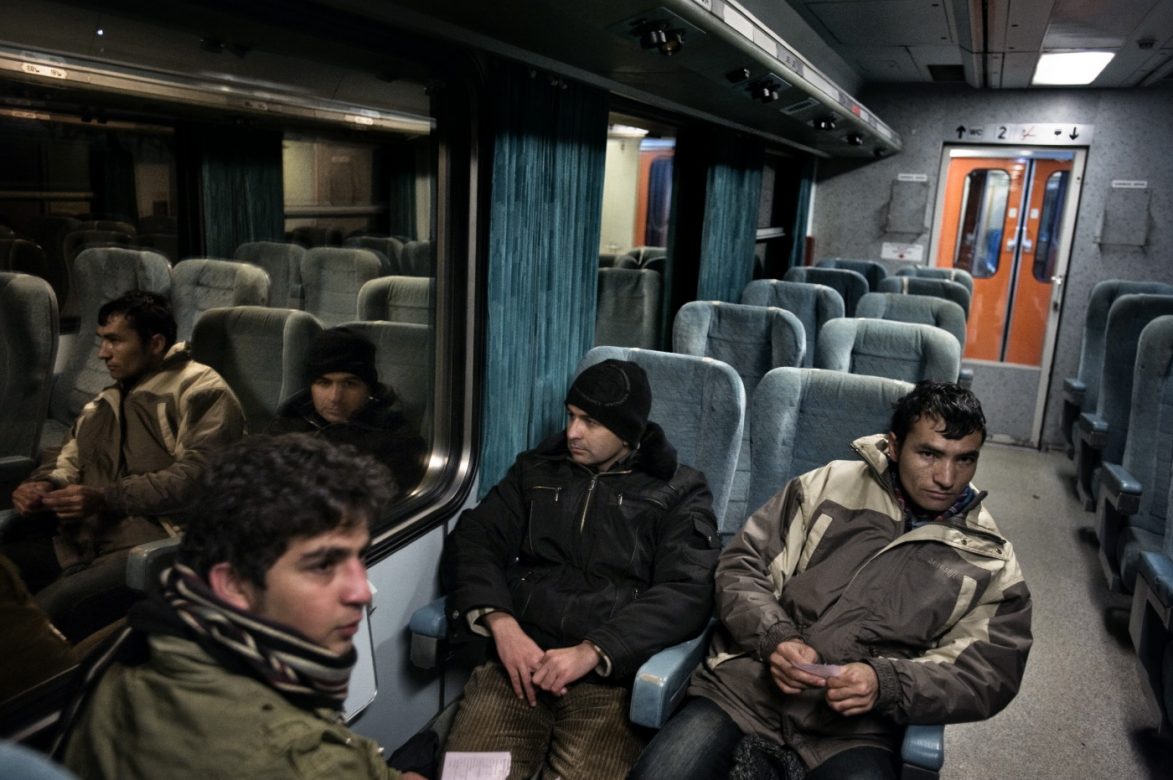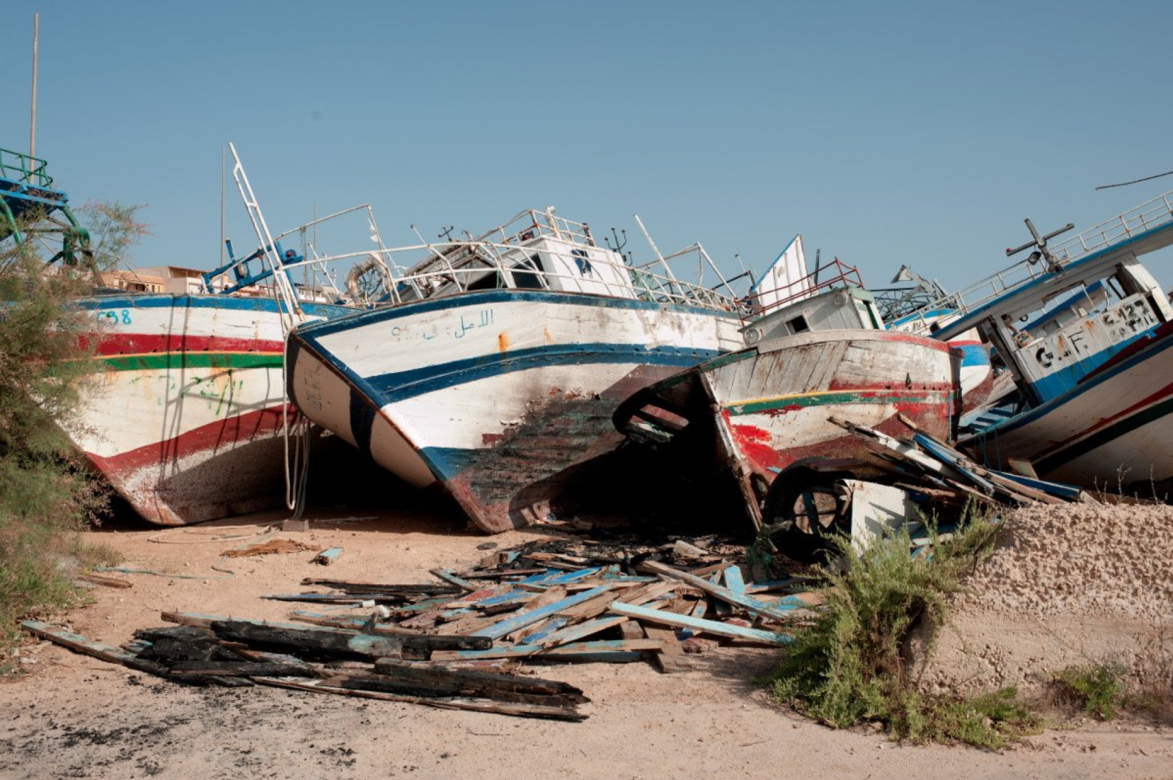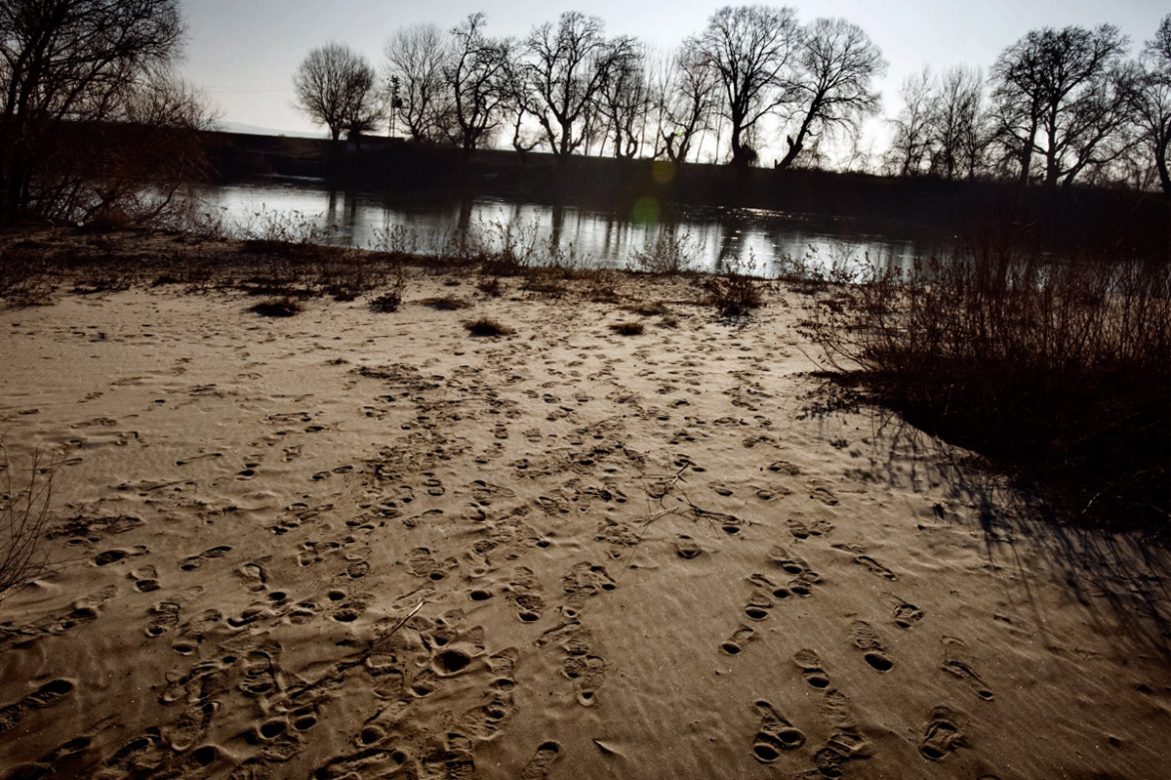
Migrants tracecs in one of the Evros river beach. During the night migrants try to cross the river in small boats. Lagyna, Greece, 2011.
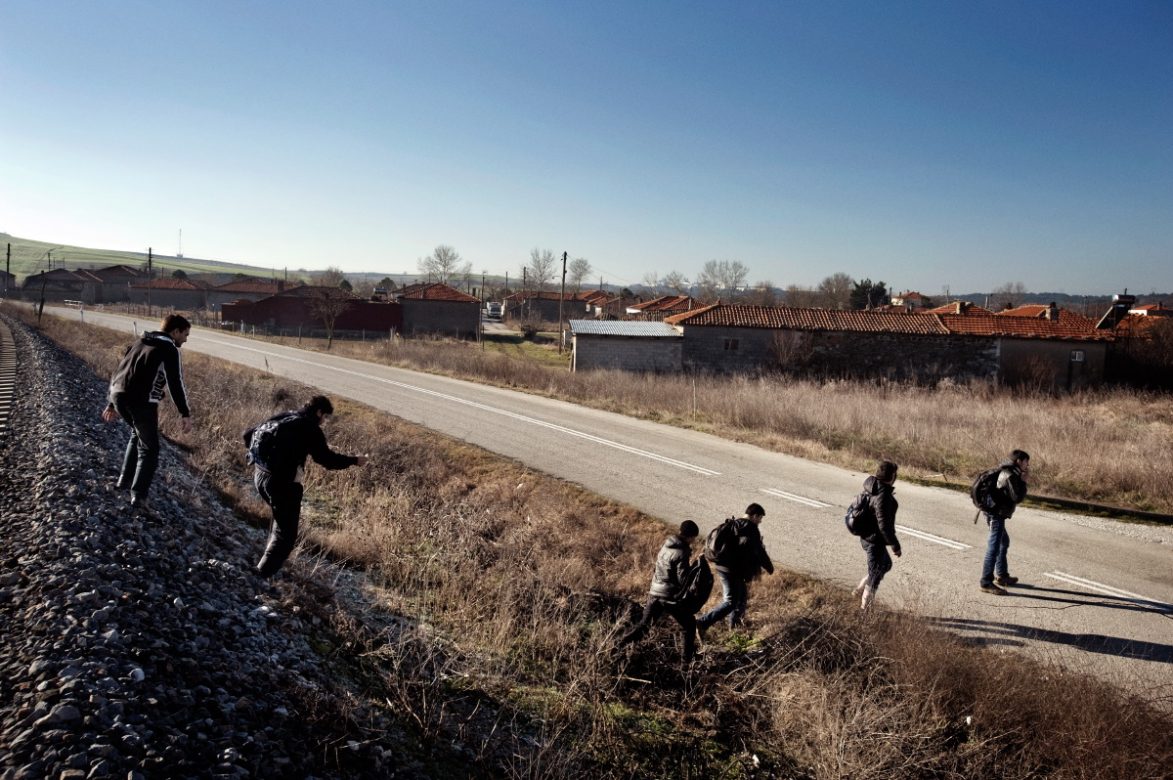
Migrants froma Afganistan along the railroad after crossing the border. Fylakto, Greece. 2011.
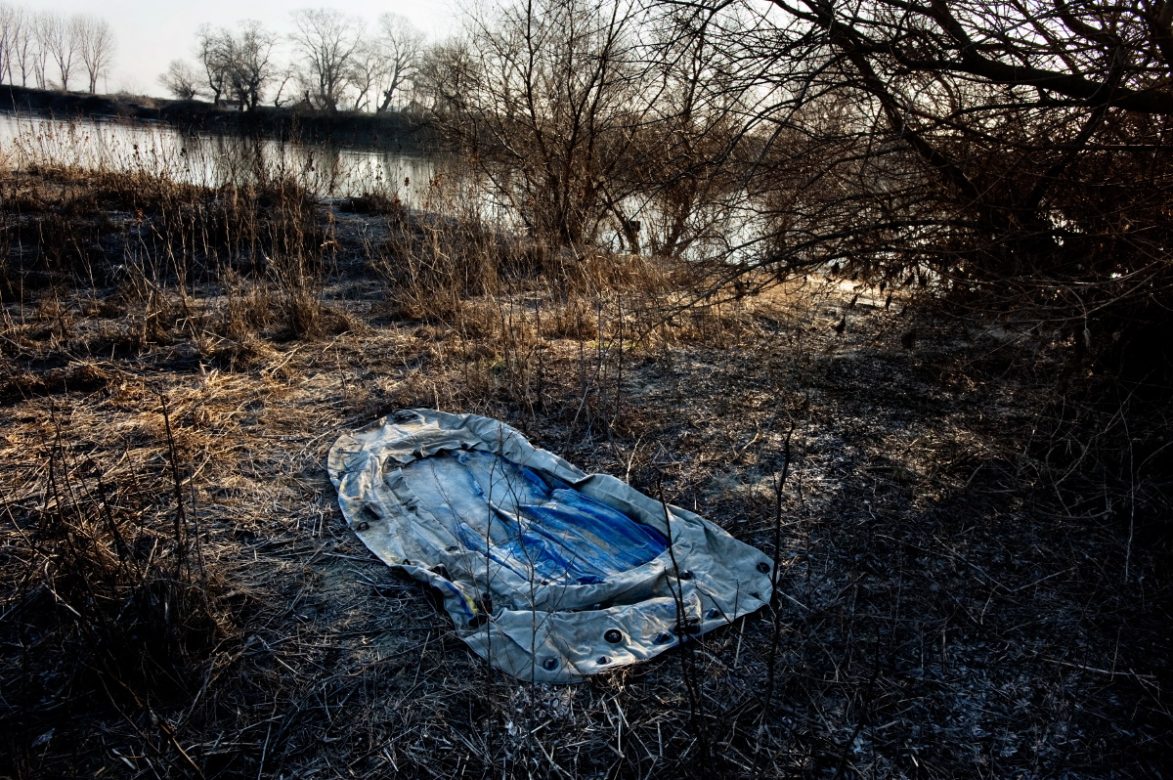
Migrants tracecs in one of the river beach. During the night migrants try to cross the river in small boats. Lagyna, Greece, 2011.
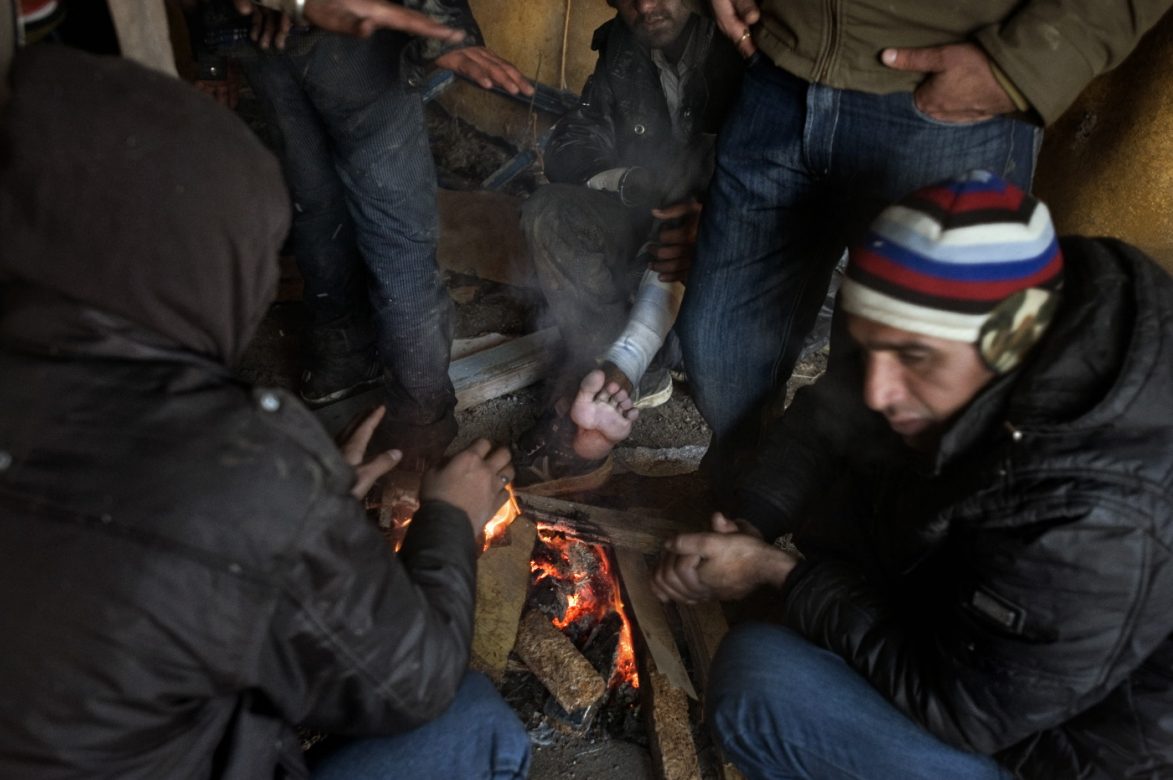
Afghan boys to warm themselves into a shack. they are waiting the mornig to take train to Athen near the Tycherò Station. Tycherò. Greece. 2011.

An pregnant woman from Africa just passed the Turkish-Greeke border close to Tycherò. Tycherò. Greece. 2011.
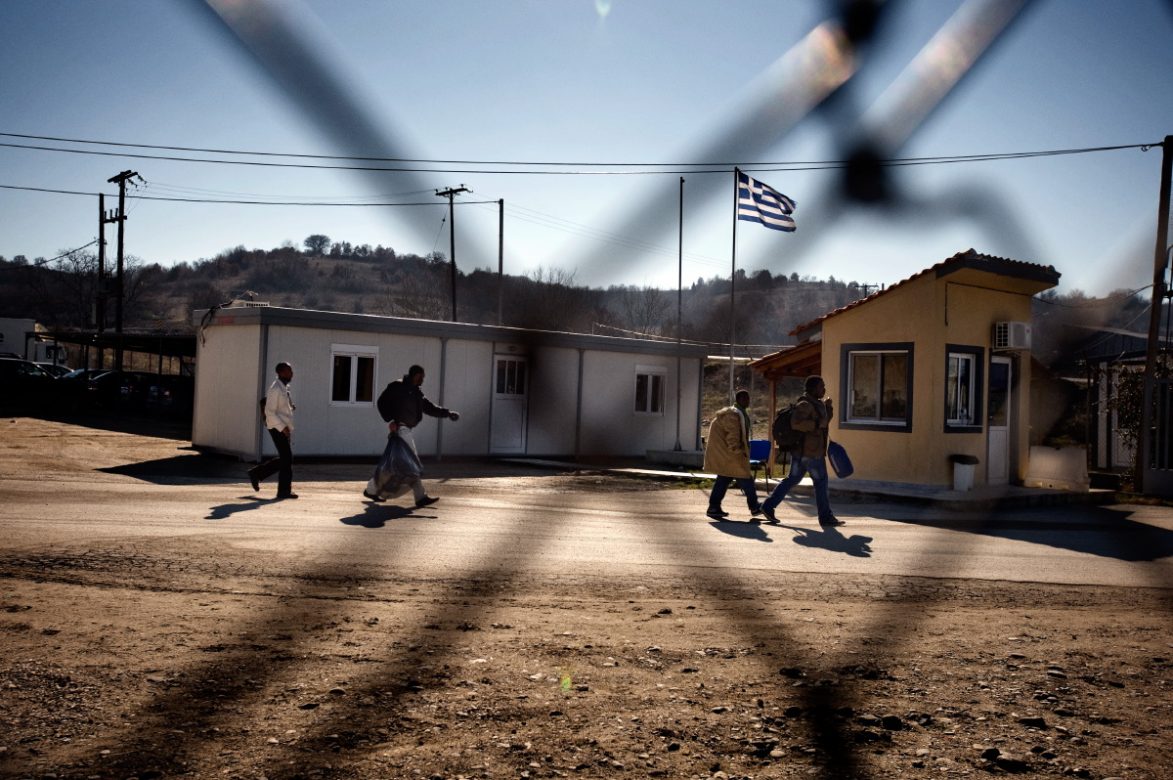
Immigrants are released from Filakyo Detention Center. There are four official detention center in the Evros region. Women and Men are forced to share crowded cells and to live in unsanitary condition. Fylakio, Greece. 2011.
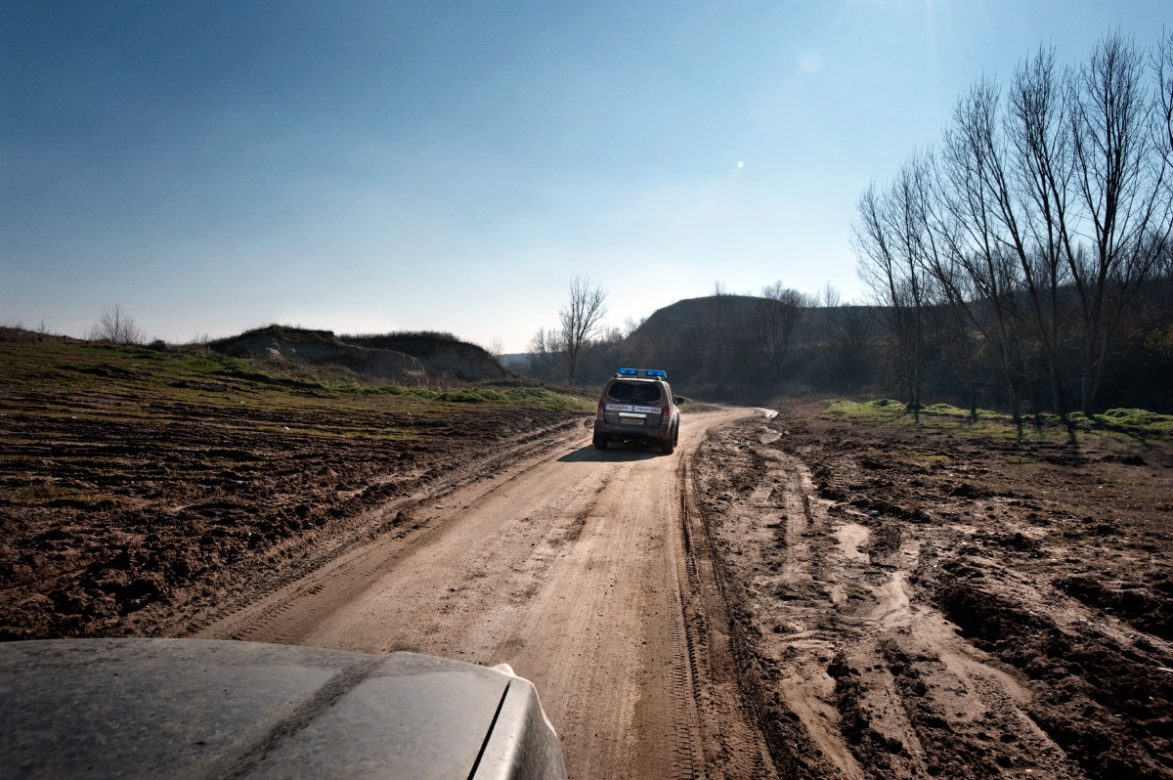
Frontex patrol. Frontex is the European border agency. Kastanies, Greece. February, 2011.
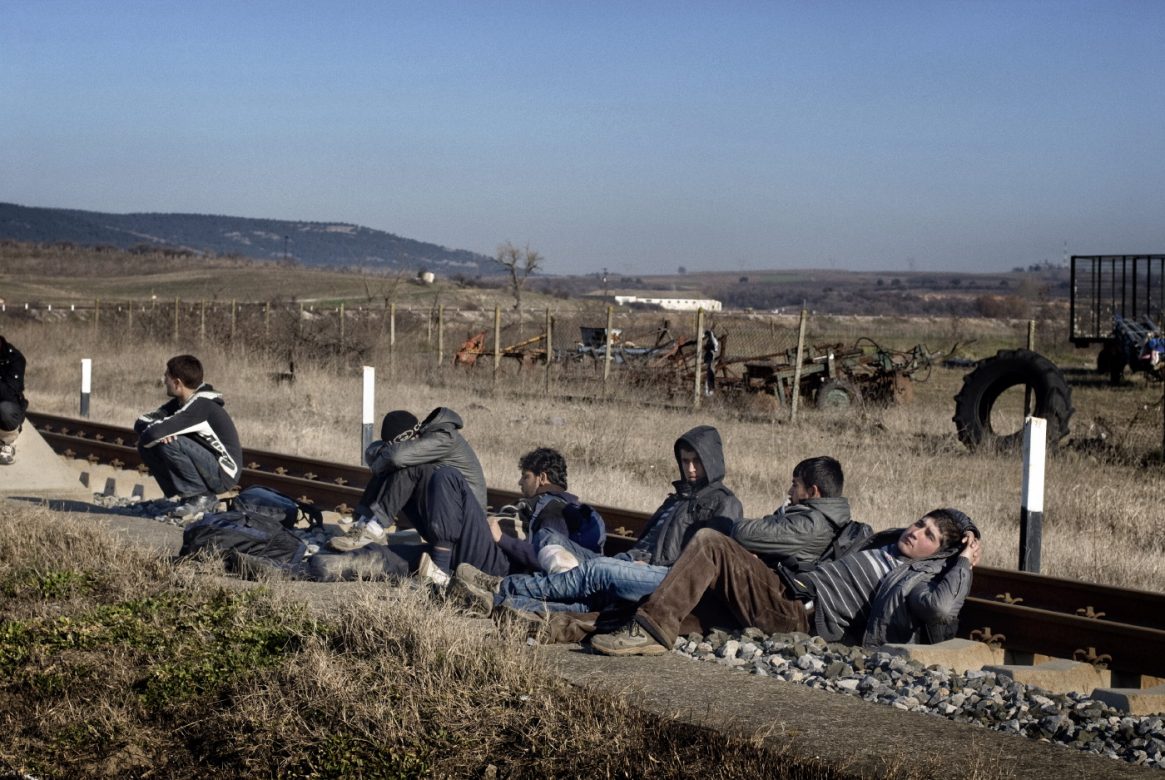
Migrants from Afganistan along the railroad after crossing the border. Fylakto, Greece. 2011.
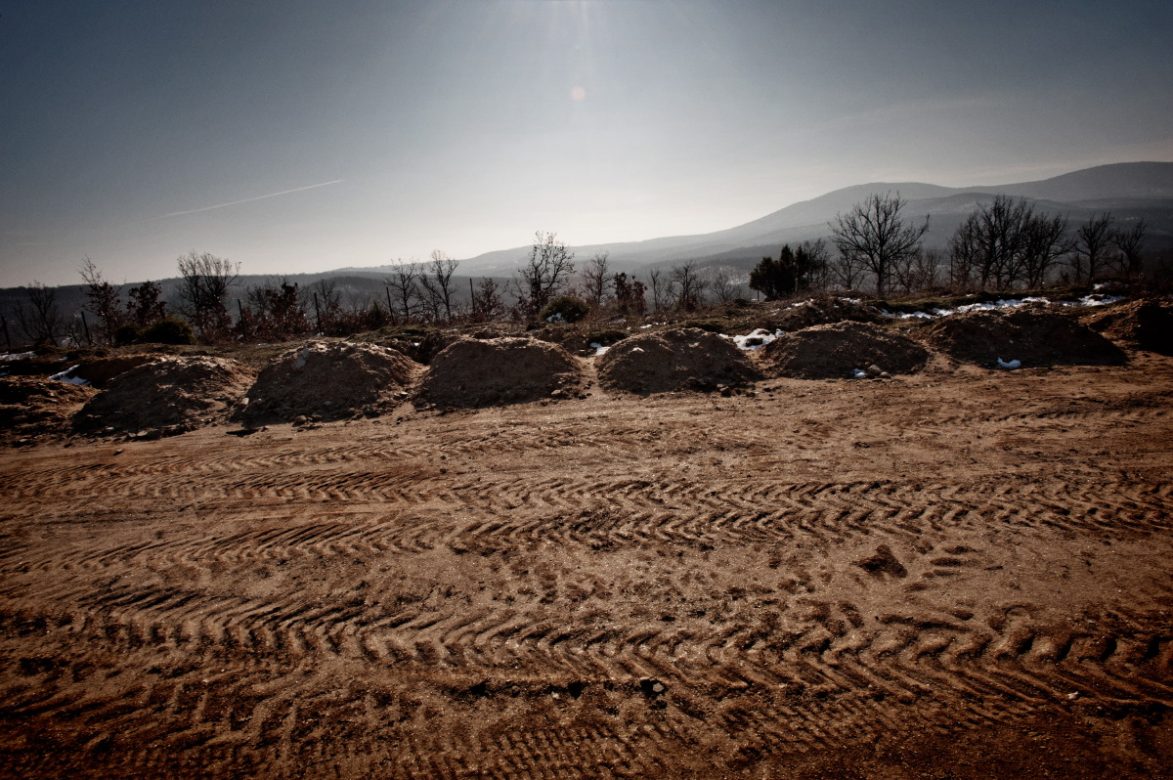
Some migrants drowned in the river trying to cross the border. They are buried in anonymous immigrants graves called
"Cemetery of the illegal immigrants". So far it is believed that between 150 and 200 deads have been buried in the mass grave.
Sidirò, Greece. 2011.
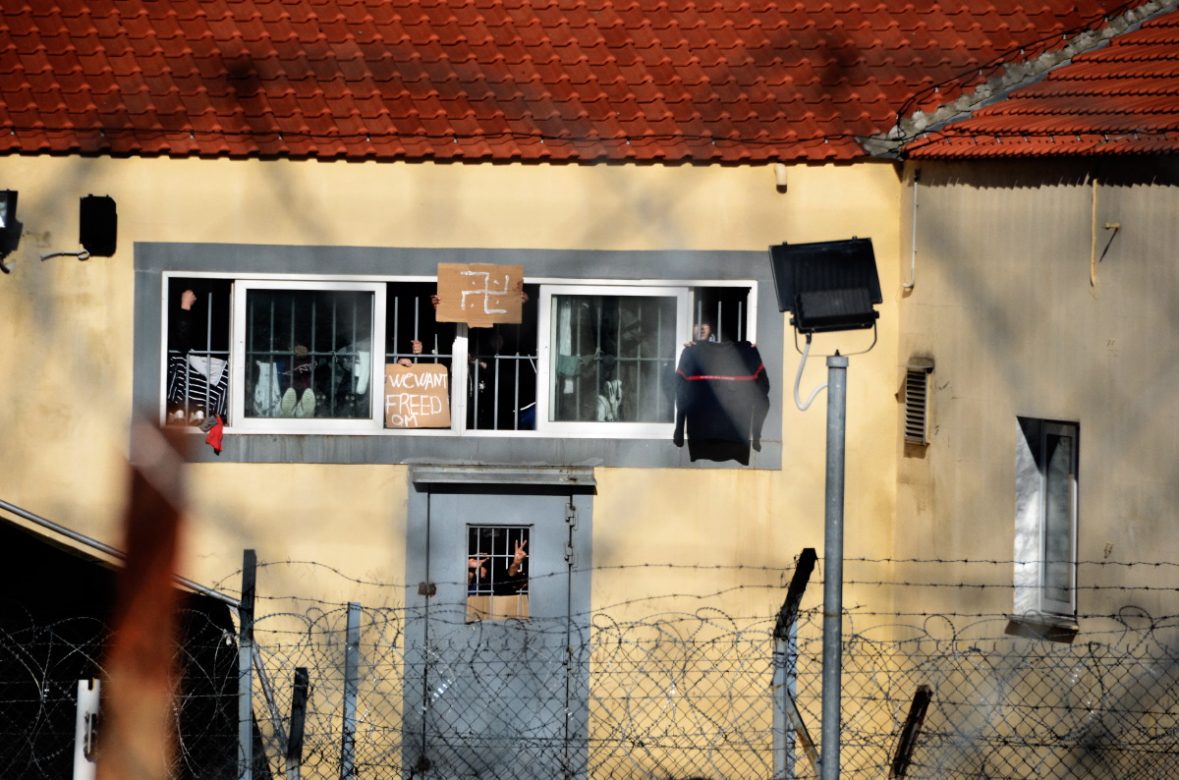
Filakyo Detention Center. There are four official detention center in the Evros region. Women and Men are forced to share crowded cells and to live in unsanitary condition. Fylakio, Greece. 2011.
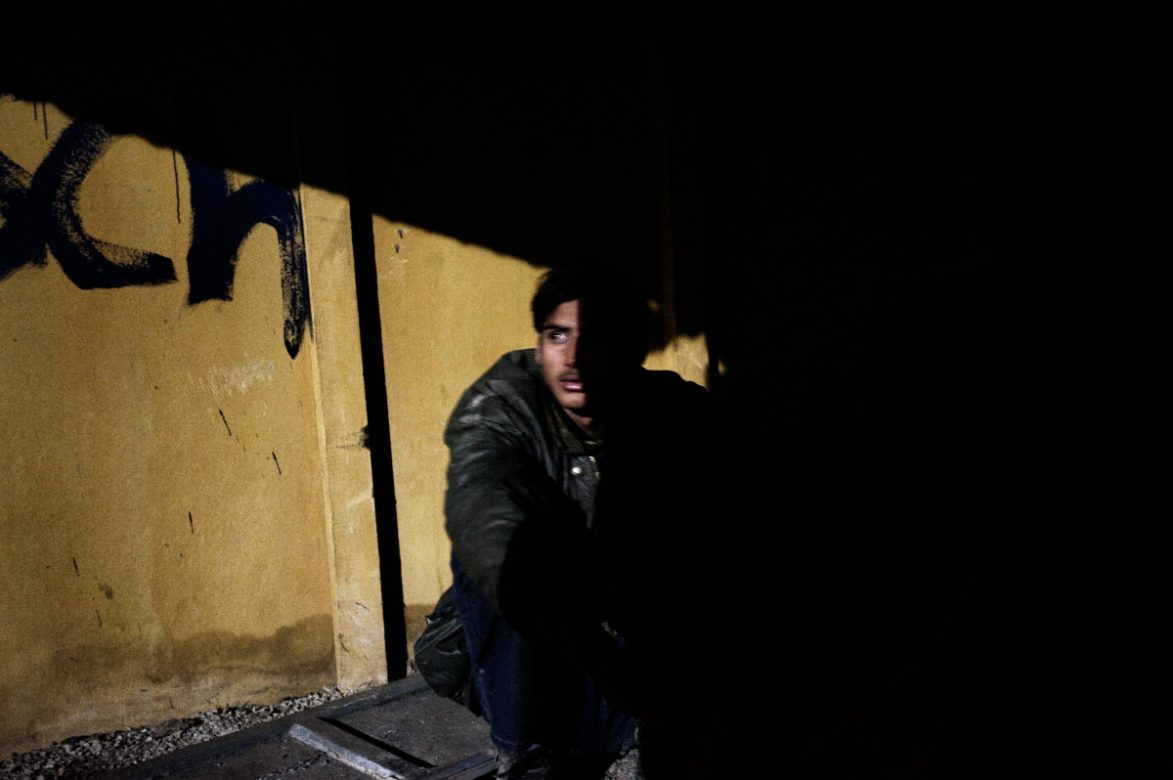
Afghan boy to warm himselves into a shack. He is waiting the mornig to take train to Athen near the Tycherò Station. Tycherò. Greece. 2011.

An African migrant, just arrived on the greek side, chanching his clothes after walking all night crossing the border. Lykofos, Greece. 2011.
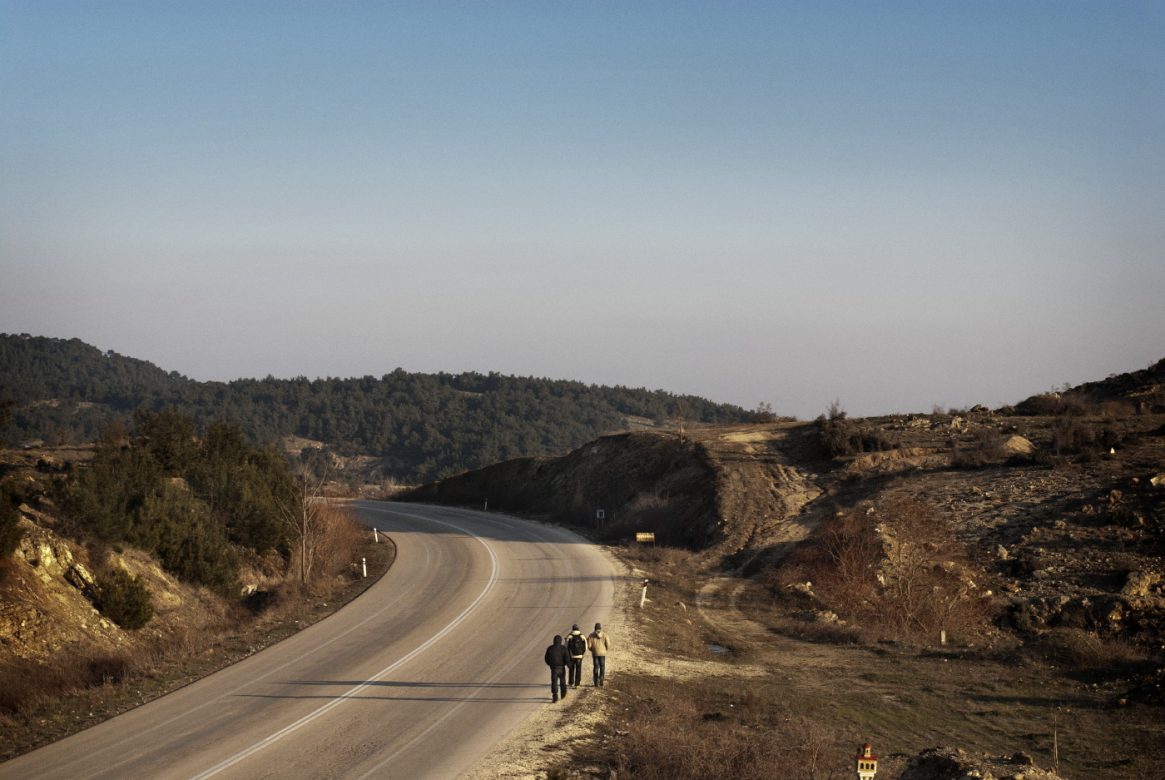
Africans migrants just arrived on the greek side. Many of them walking along the highway hoping to met police in order to ask for asylum. Lykofos, Greece. 2011.
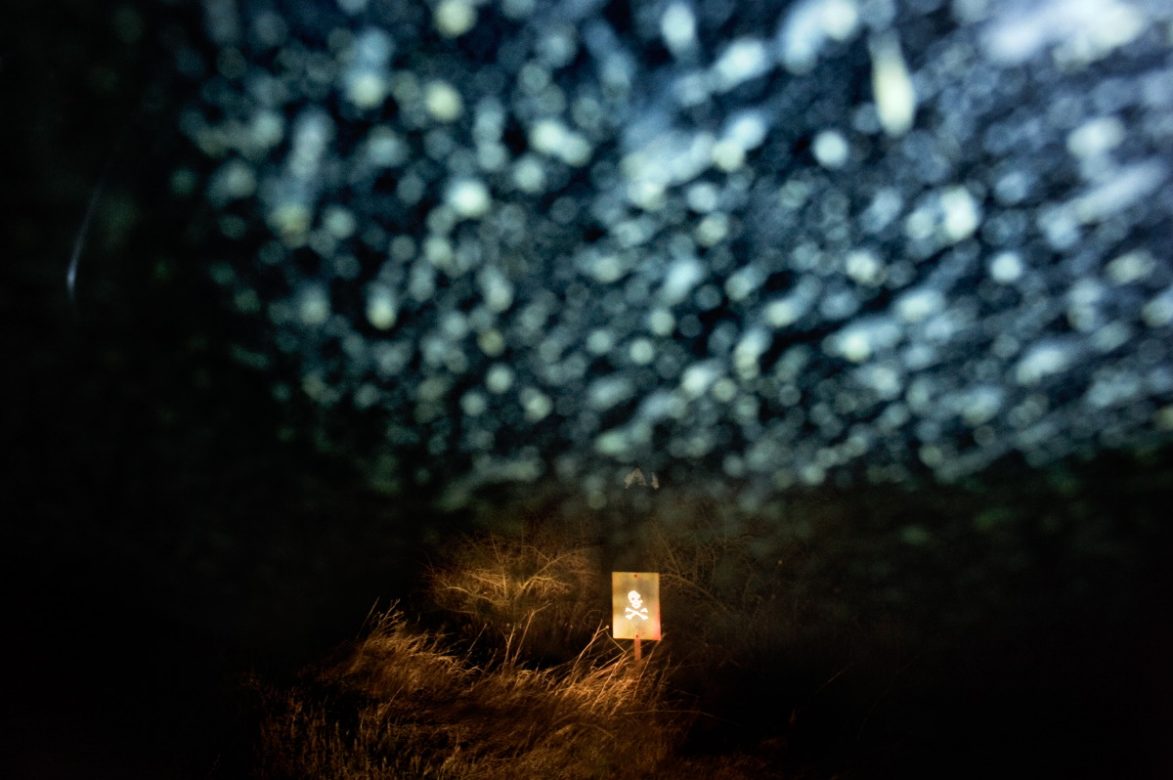
There are a lot of minefields, along the river, on the greek border. Kipoi, Greece. 2011.
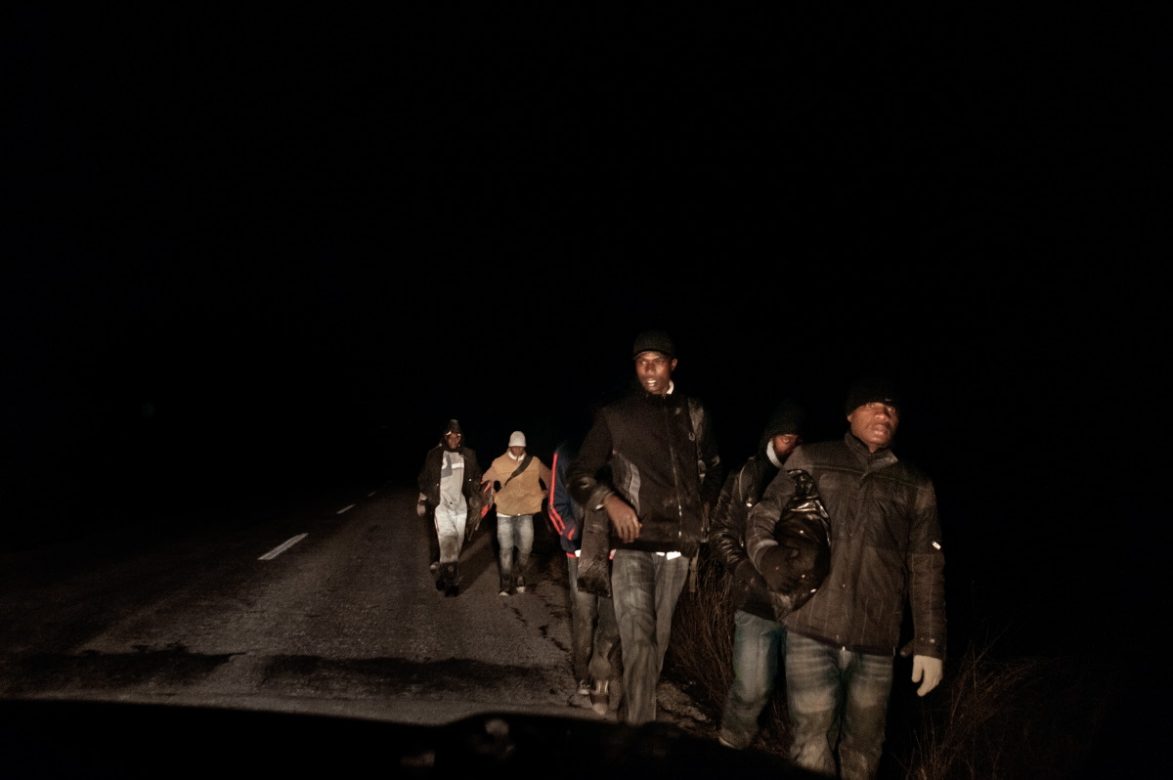
Africans migrants just arrived on the greek side. Many of them walking all night long to reach the highway hoping to met police in order to ask for asylum. Soufli, Greece. 2011.
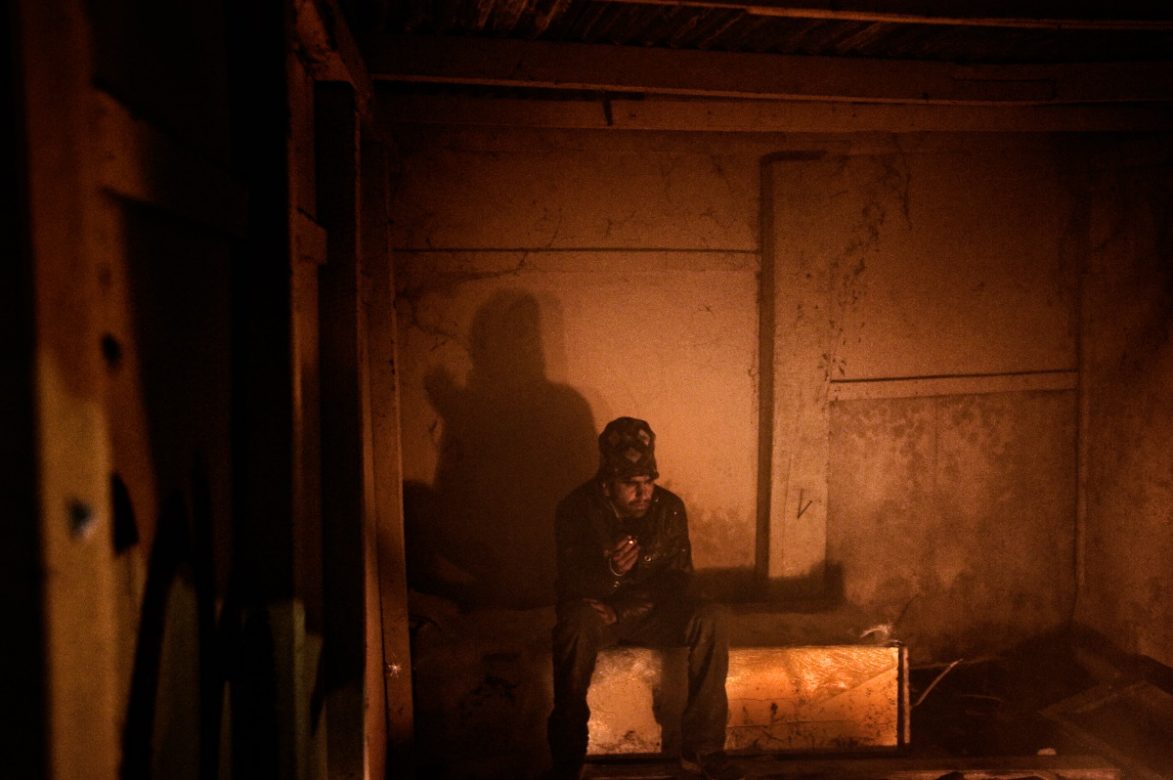
Afghan boy to warm himselves into a shack. He is waiting the mornig to take train to Athen near the Tycherò Station. Tycherò. Greece. 2011.
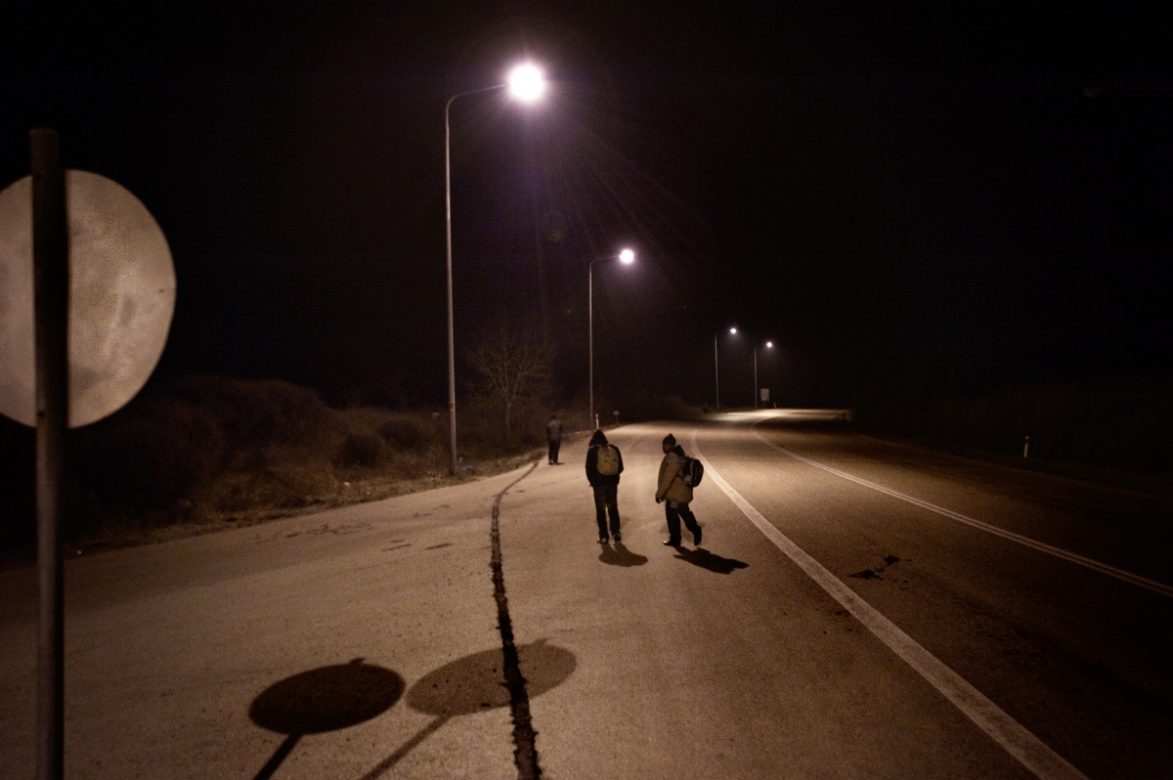
Africans migrants just arrived on the greek side. Many of them walking along the highway hoping to met police in order to ask for asylum. Lykofos, Greece. 2011.
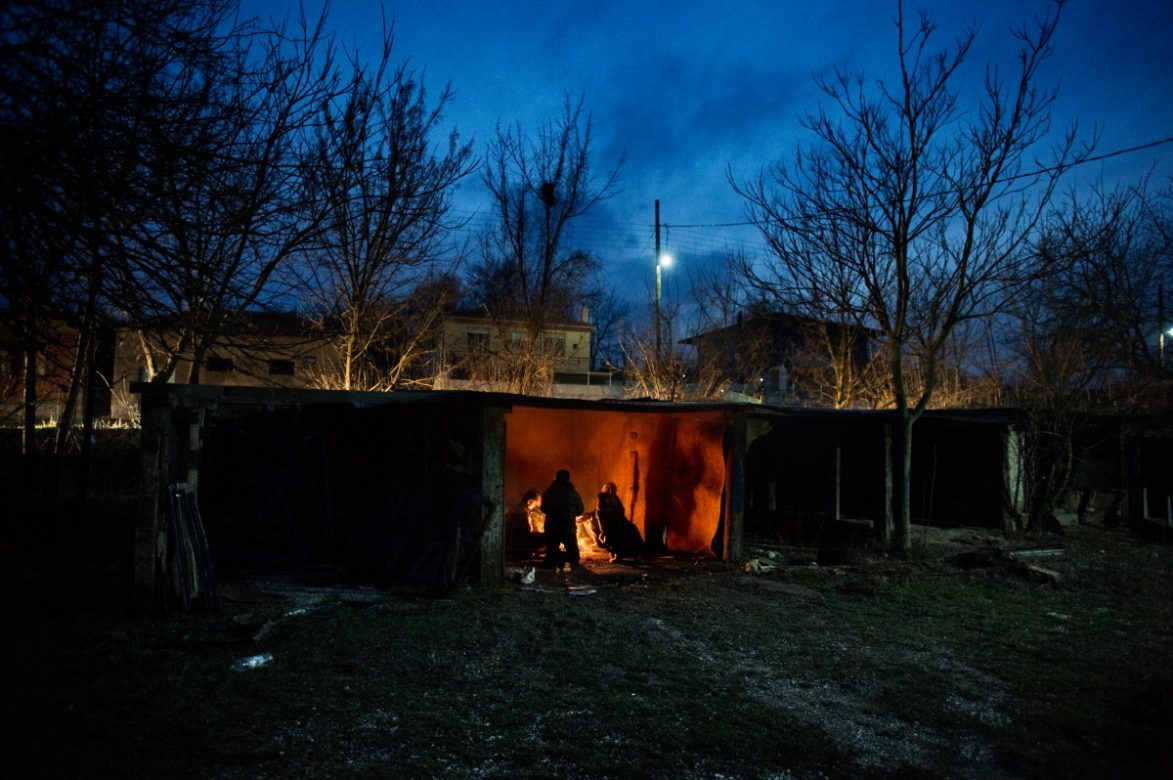
Afghan boys to warm themselves into a shack after crossing the river. Tycherò. Greece. 2011.
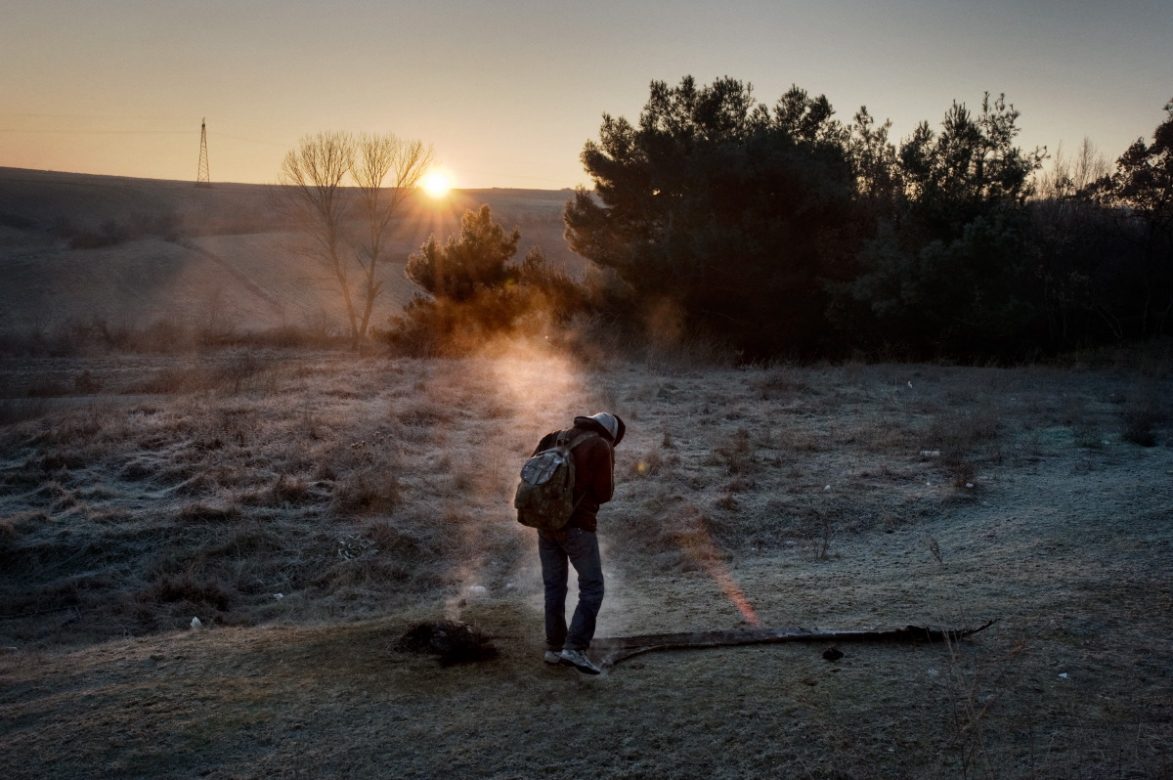
After crossing river the migrants gather around the fire to keep warm. Lykofos, Greece. 2011.
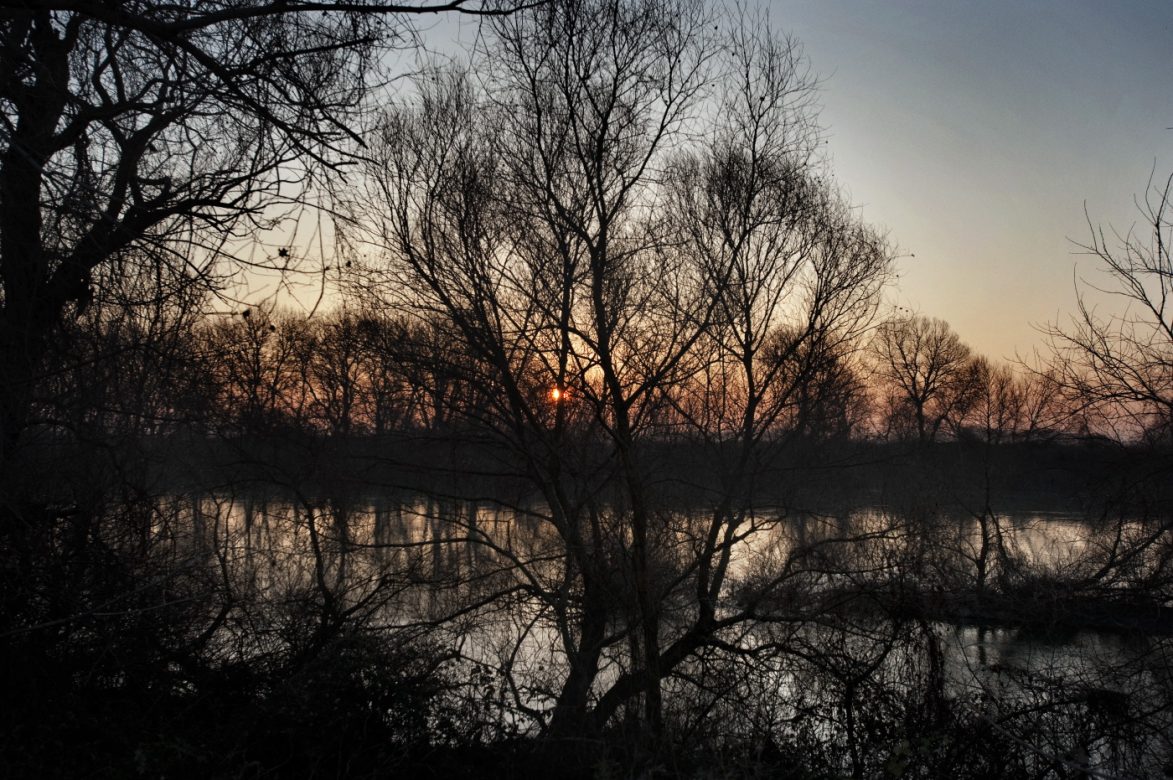
The Turkish border with greece, Evros river, is the main entry point for about 75 percent of illegal immigrants arriving in the European Union. Over 128000 migrants and political asylum seekers crossed into greece last year, more than 40000 of them along the land border with Turkey. Lagyna, Greece, 2011.
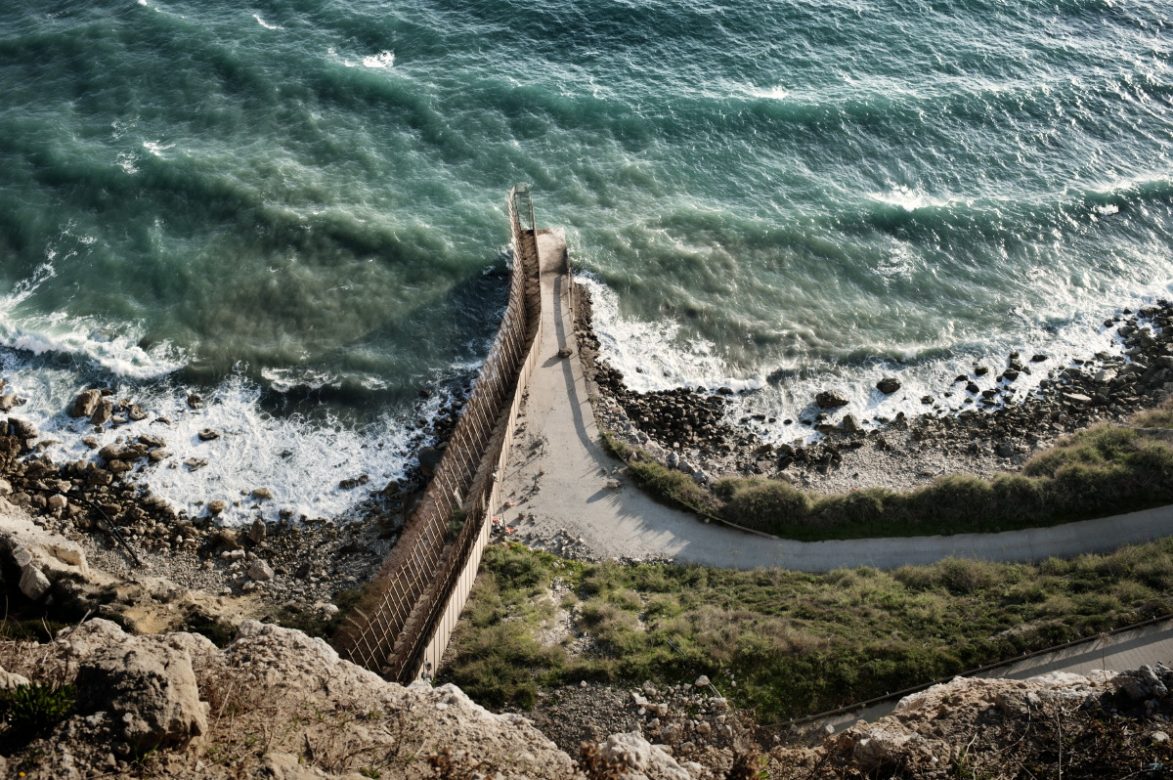
The border between the Maghreb and Europe, is protected by a double wire barrier high 6 meters and long 9,7 KM and down to the sea. Morocco on the left side and Spain on the right. Melilla, Spain. 2012.

Civil guard officers patrolling the border. Melilla, Spain, 2012.
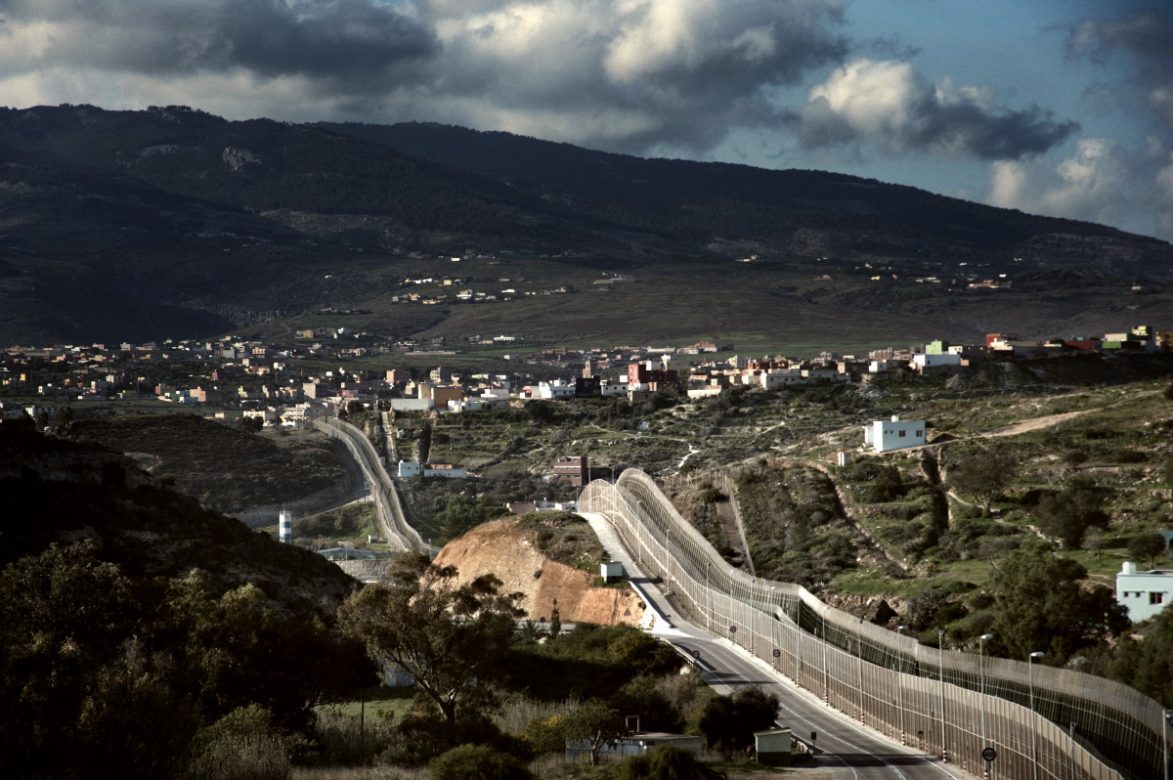
The border between the Maghreb and Europe, is protected by a double wire barrier. It consists of 9,7 Km of parallel 6 m high fences topped with barbed wire, regular watchposts and a road running between them to accomodate police patrols. Melilla, Spain. 2012.
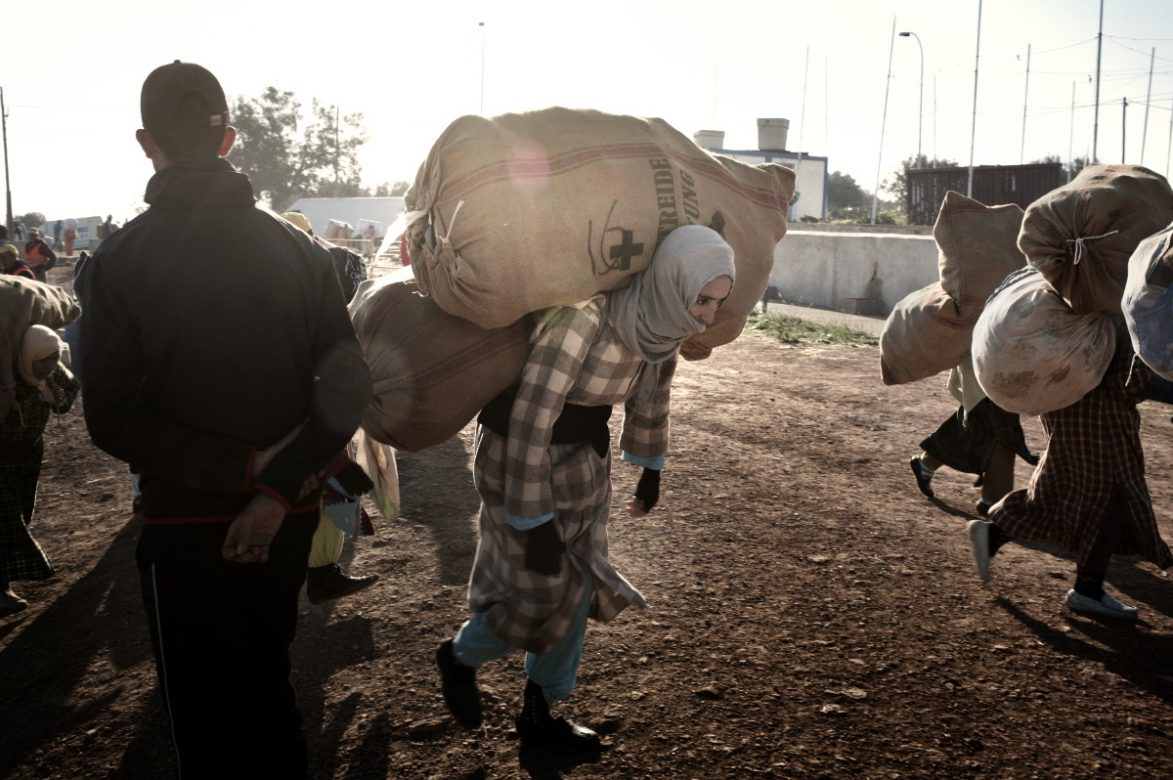
The border gate "Barrio Chino". here is focused the passage of all large loads of goods from Melilla (Spain) to Morocco. It reaches the 17000 cross-border passes per day. Every morning a crowd of porters crosses several times the border carryng goods on their shoulders for 60 Dirhams per step (about 6 euros). Melilla, Spain, 2012.

Migrant cslleping out of CETI. Many are still blocked for years and they all live in hope of get the documents to the Spanish peninsula. Meilla, Morocco, 2012.
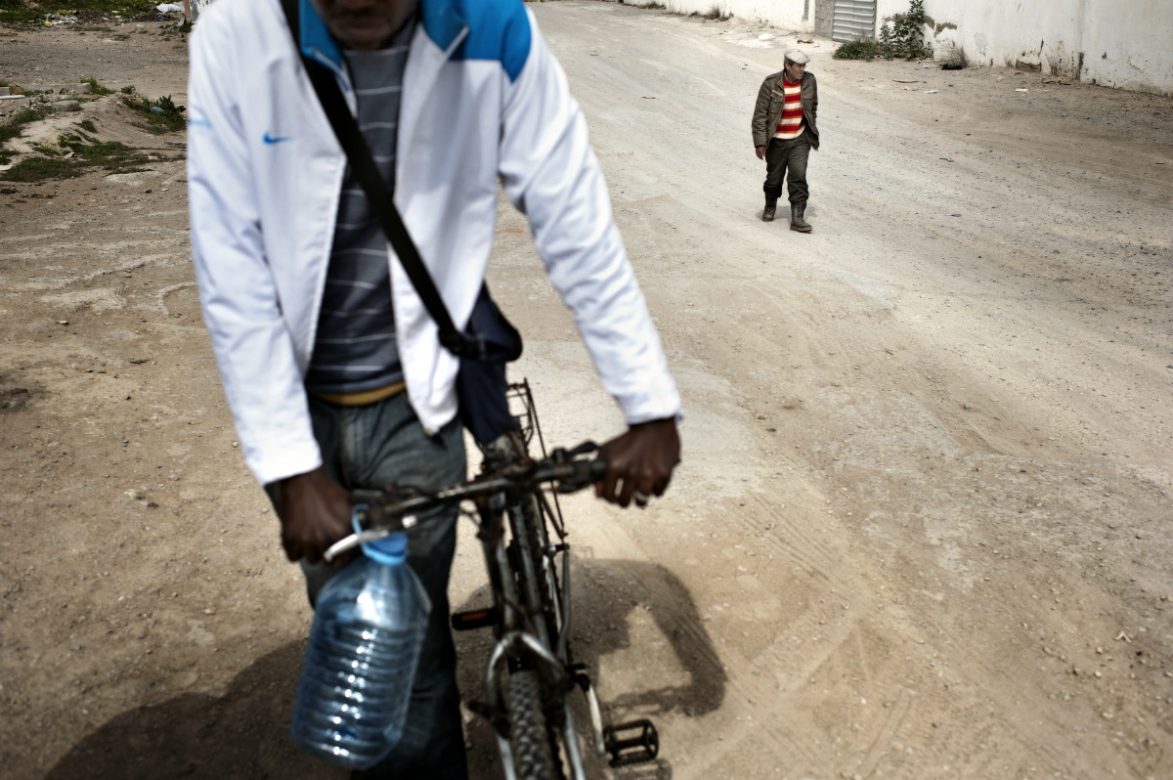
Migrants going to take water. here migrants work 12 hours a day washing and parking cars for spare change. Melilla, Spain. 2012.
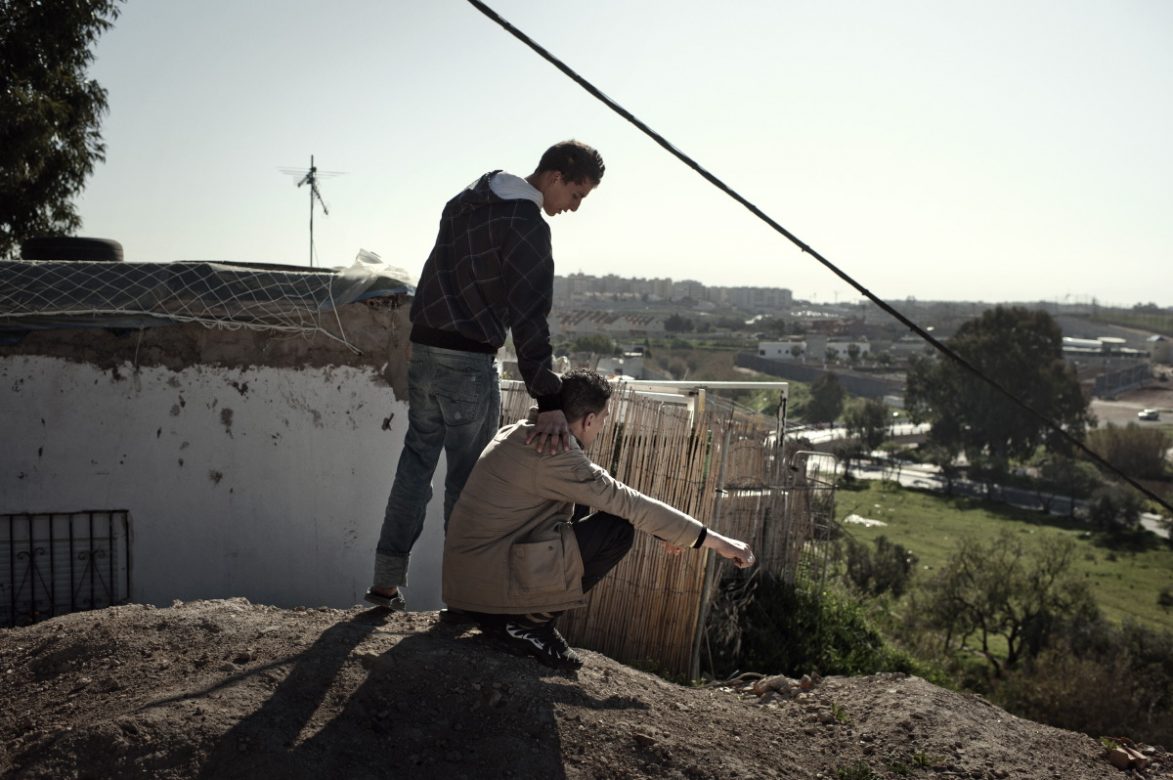
Tunisian migrant consoling friend who is crying thinking of his family. Many are still blocked for years and they all live in hope of get the documents to the Spanish peninsula. Meilla, Morocco, 2012.
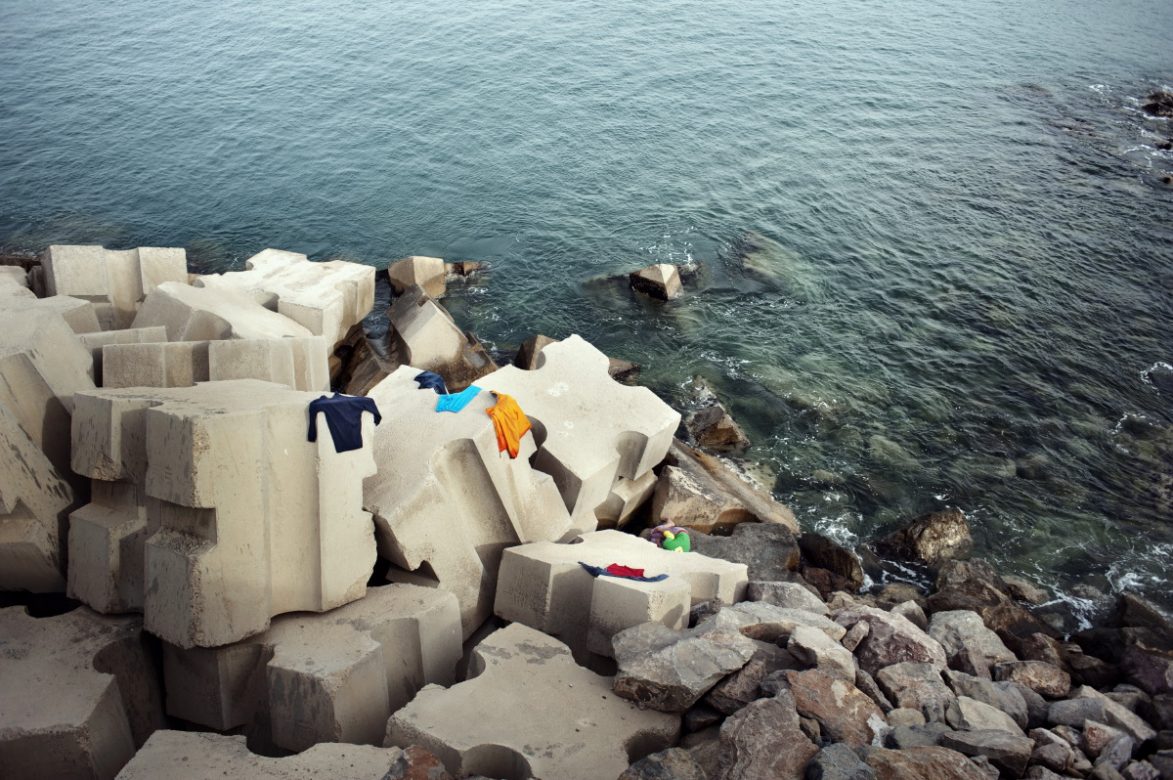
An immigrant let dry just washed clothes at the sun. Melilla, Spain, 2012.
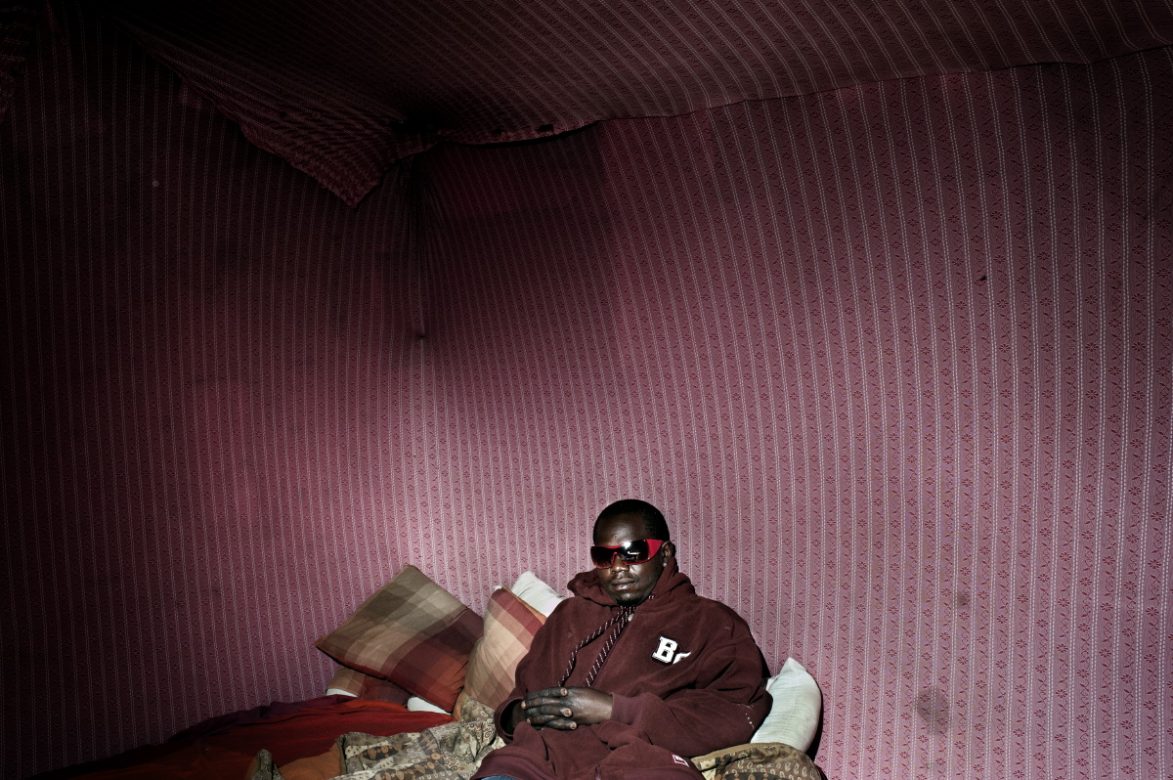
Migrants in a camp they built outside the CETI (detention center) to dodge the police, who come to CETI in the night, and take them for deportation. Meliila, Spain, 2012.
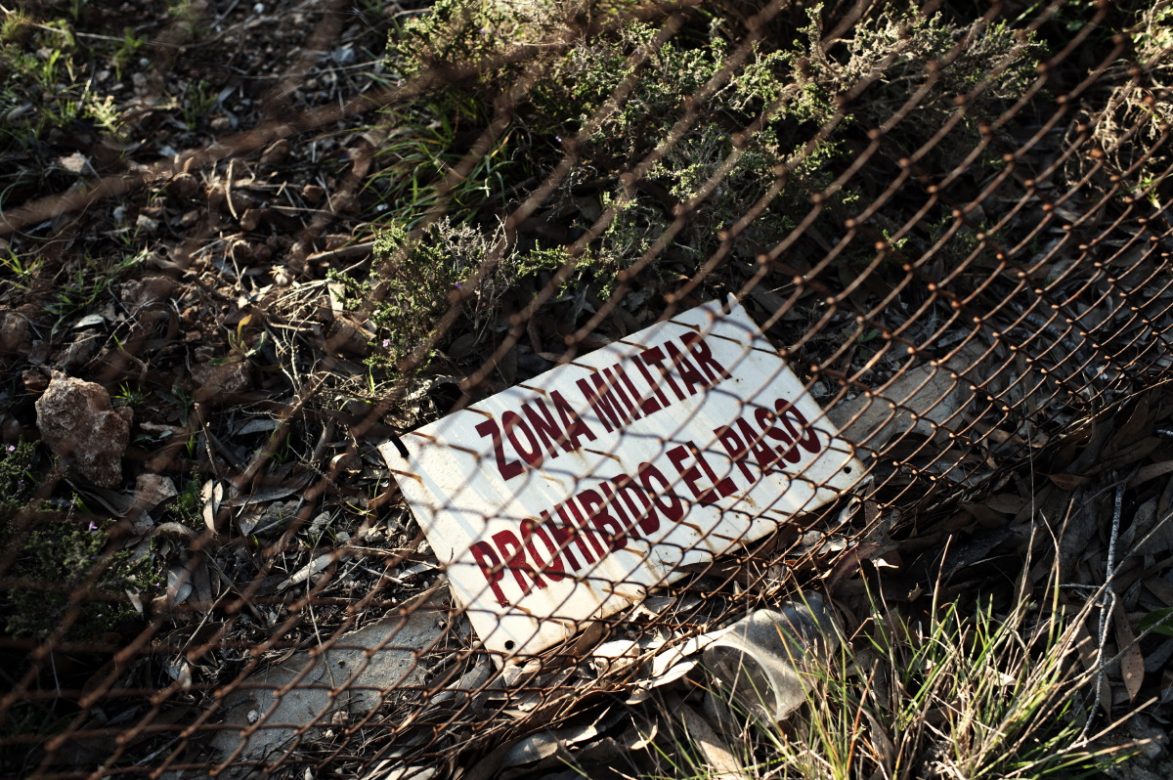
The border between the Maghreb and Europe, is protected by a double wire barrier. It consists of 9,7 Km of parallel 6 m high fences topped with barbed wire, regular watchposts and a road running between them to accomodate police patrols. Melilla, Spain. 2012.
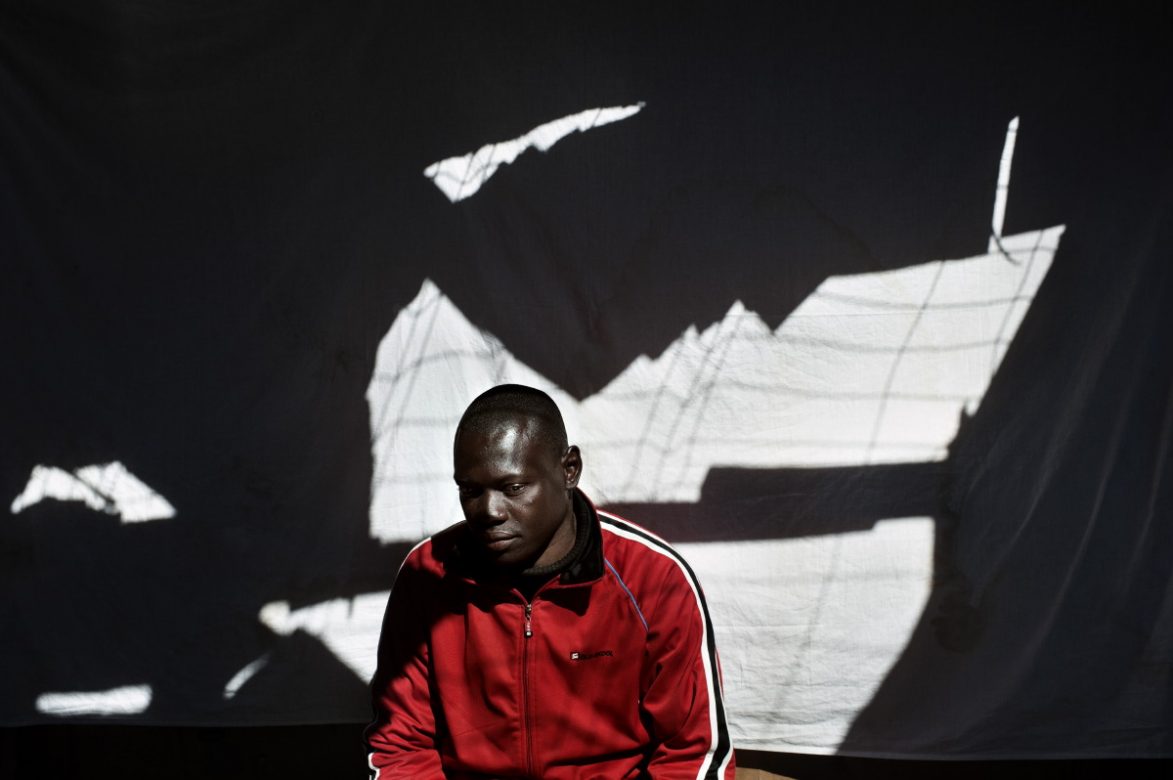
Migrants in a camp they built outside the CETI (detention center) to dodge the police, who come to CETI in the night, and take them for deportation. Meliila, Spain, 2012.
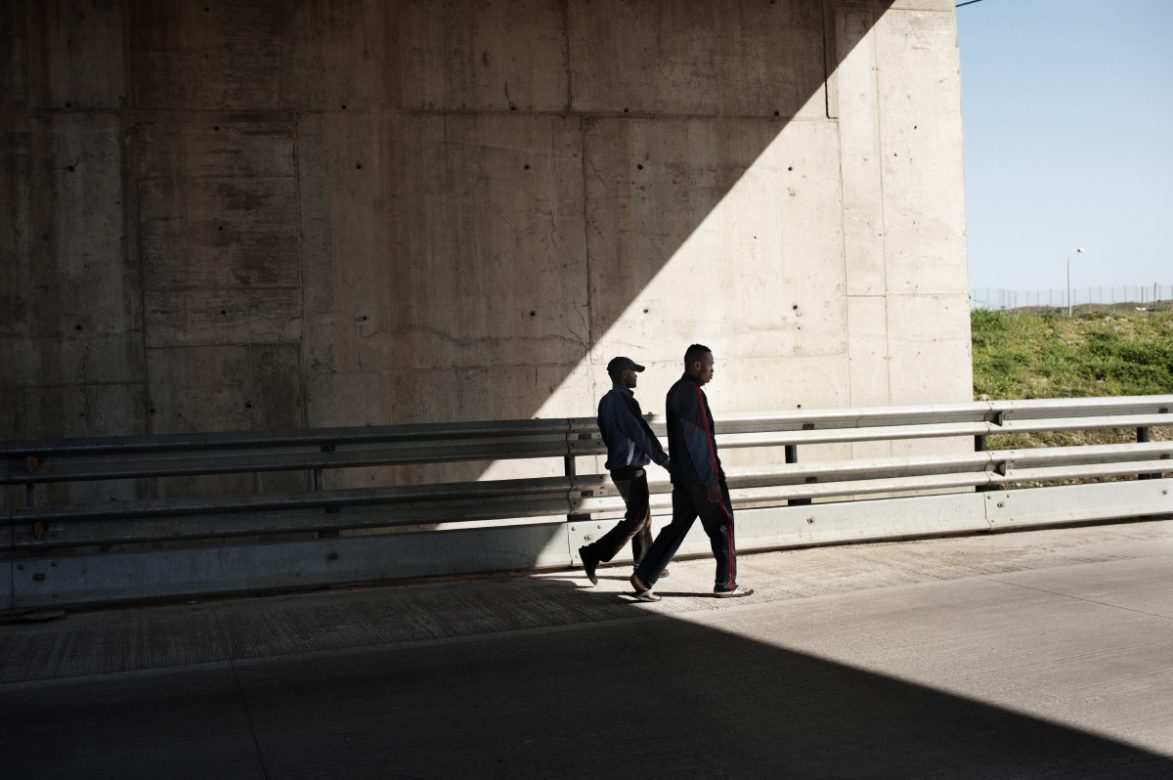
On the way to the CETI. everytime migrants go up and down from the CETI to the camp and back.

Migrants in a camp they built outside the CETI (detention center) to dodge the police, who come to CETI in the night, and take them for deportation. Meliila, Spain, 2012.
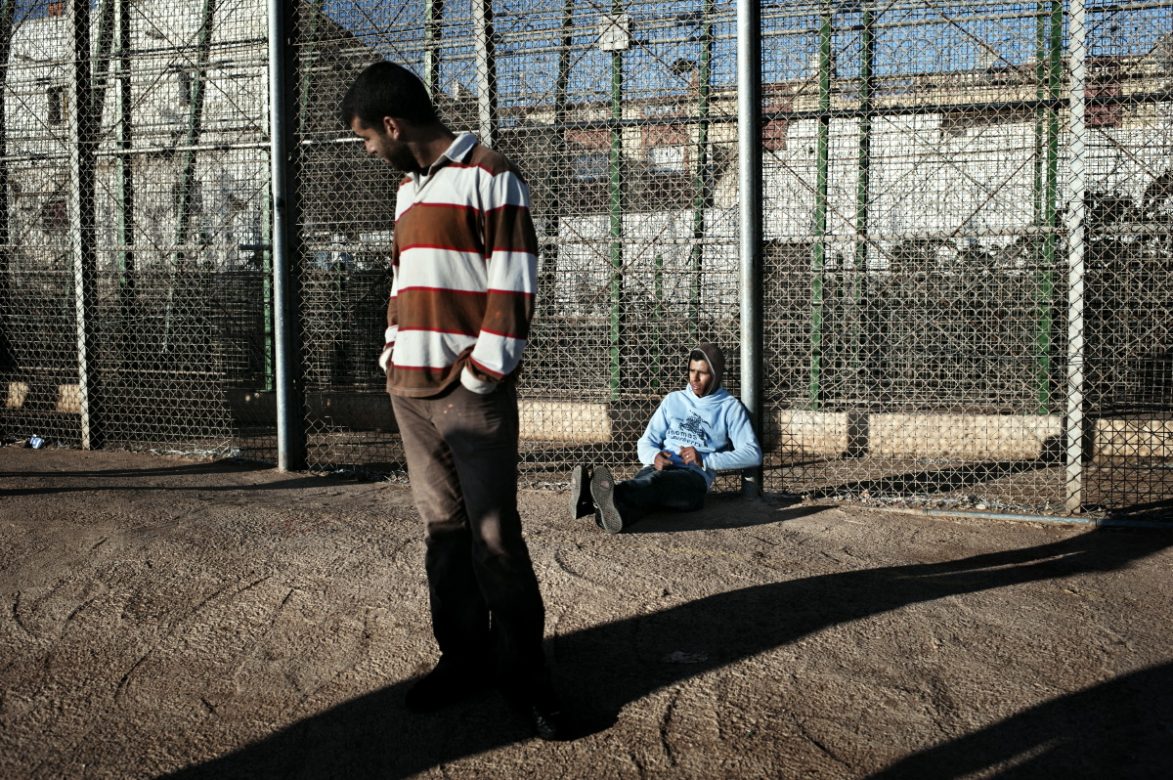
Migrants waiting to pass border. The border between the Maghreb and Europe, is protected by a double wire barrier high 6 meters and long 9,7 KM and down to the sea. Melilla, Spain. 2012.

The border gate "Barrio Chino". here is focused the passage of all large loads of goods from Melilla (Spain) to Morocco. It reaches the 17000 cross-border passes per day. Every morning a crowd of porters crosses several times the border carryng goods on their shoulders for 60 Dirhams per step (about 6 euros). Melilla, Spain, 2012.
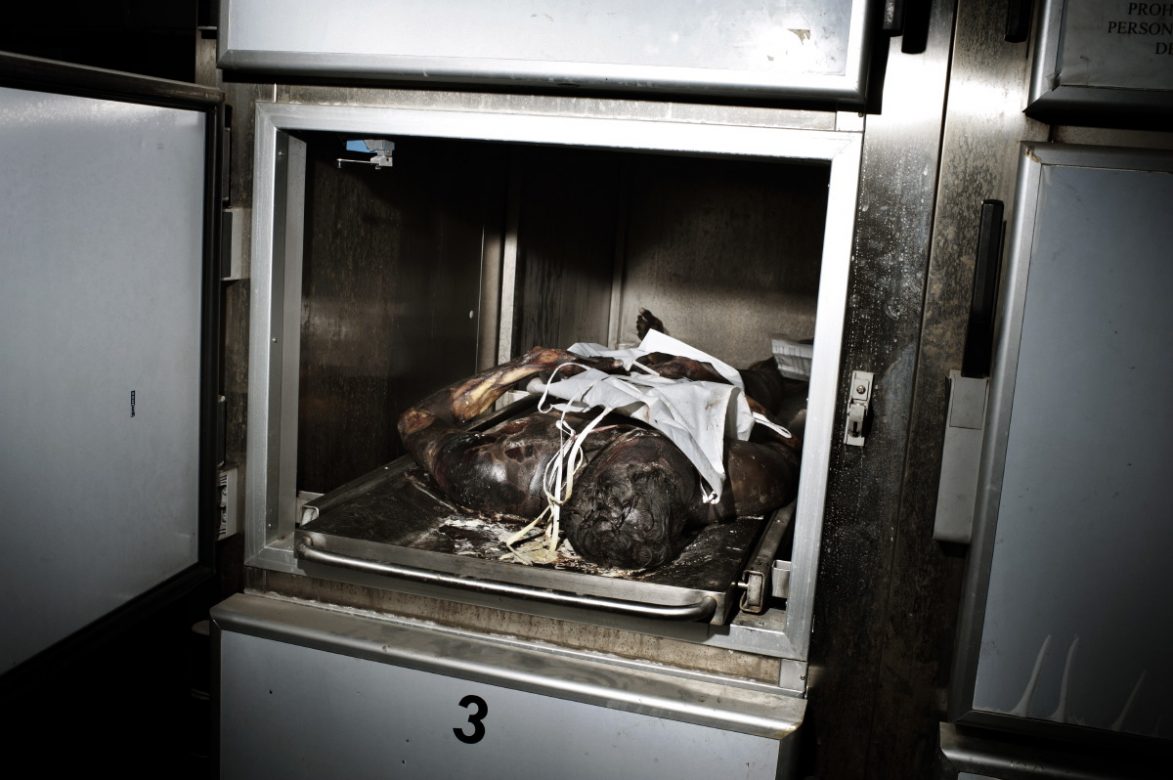
Many migrants trying to cross the border by swimming but often do not make it. In the cold room body of a migrant found on the beach. The last two bodies were found in March 2012.

Many migrants spend the night in the caves of the sea
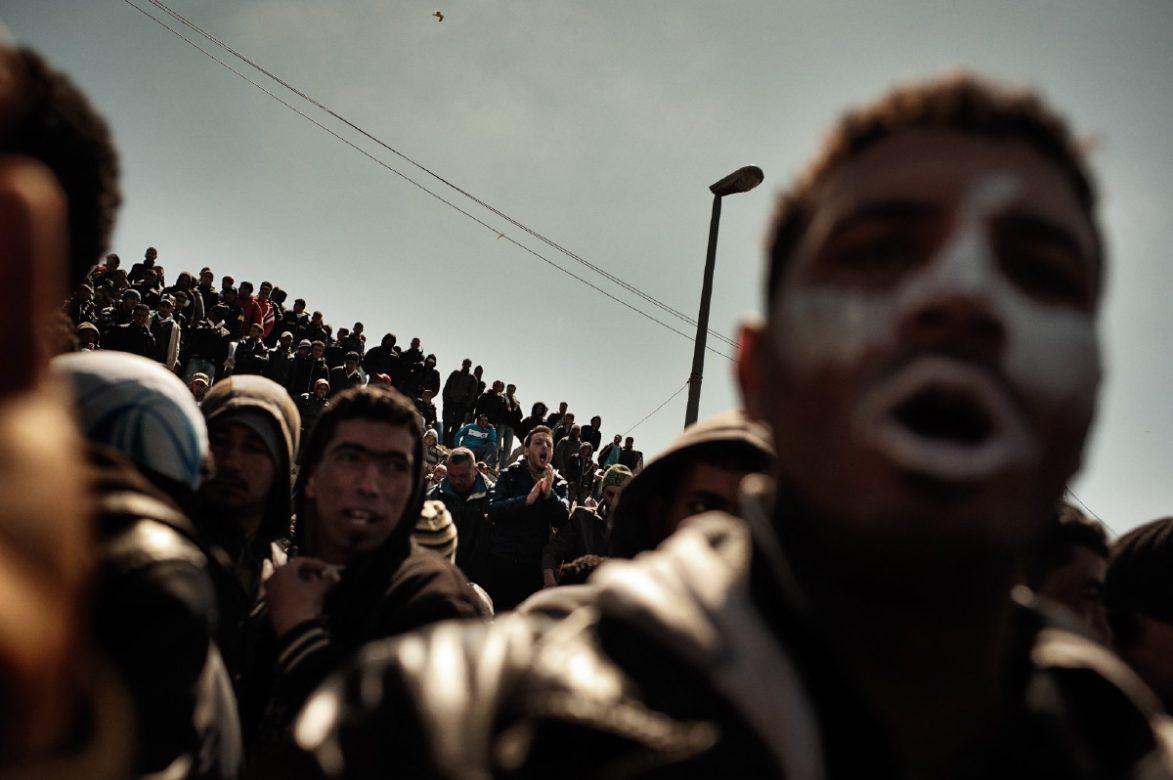
During the Tunisian protest in the port of Lampedusa island. Italy. Sicily, Lampedusa. April, 2011.
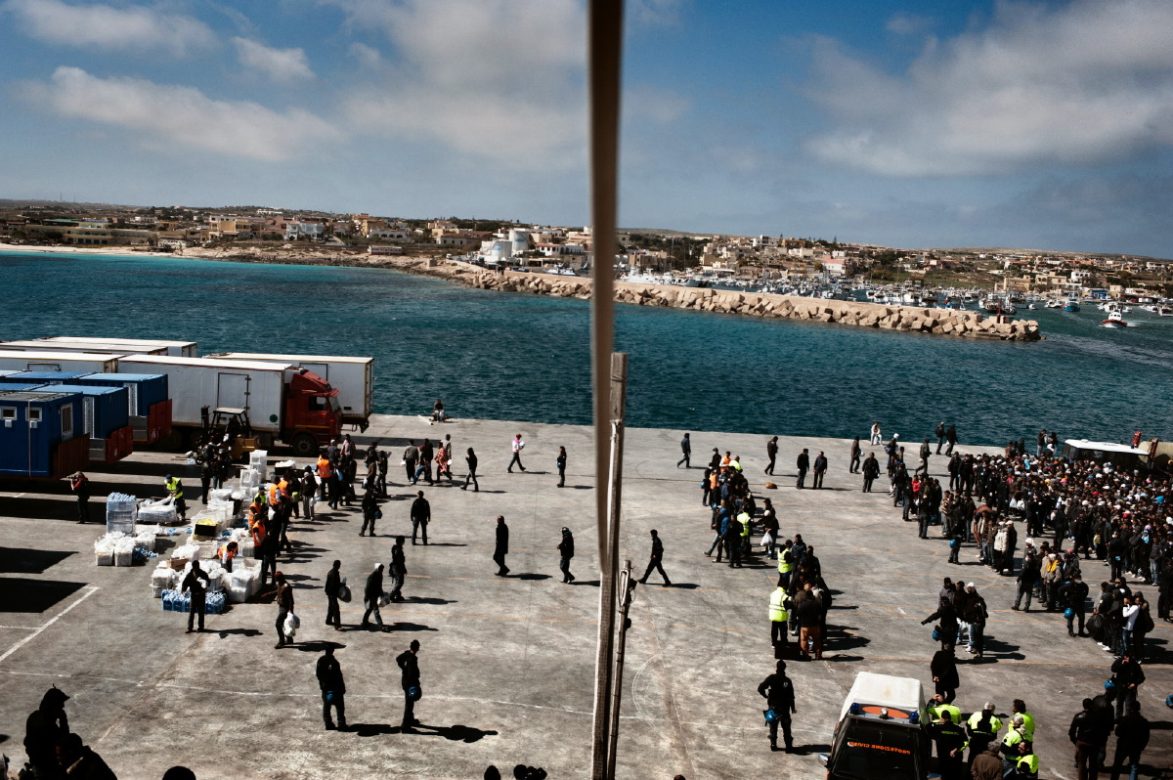
Every day for three-time volounteer army distribute food to migrants in the port of Lampedusa island. Italy. Sicily, Lampedusa. April, 2011.
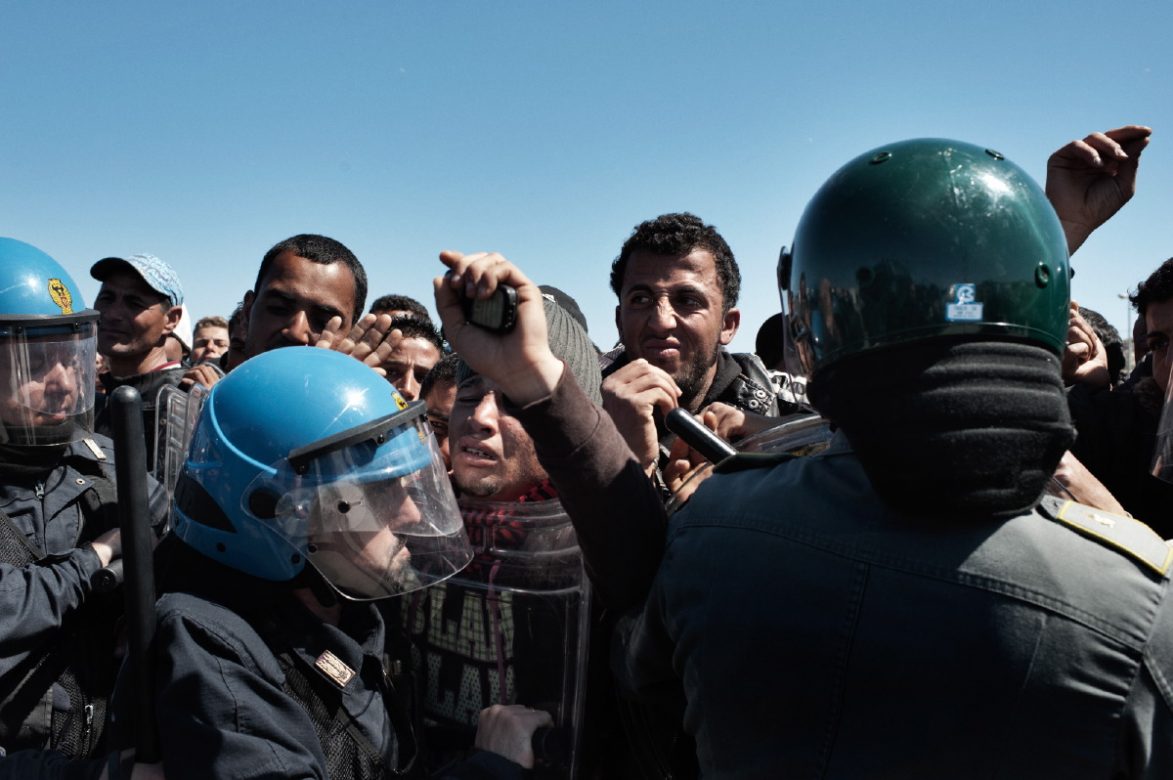
During the transfer of the Tunisian migrants to the mainland. Italy. Sicily, Lampedusa. April, 2011.
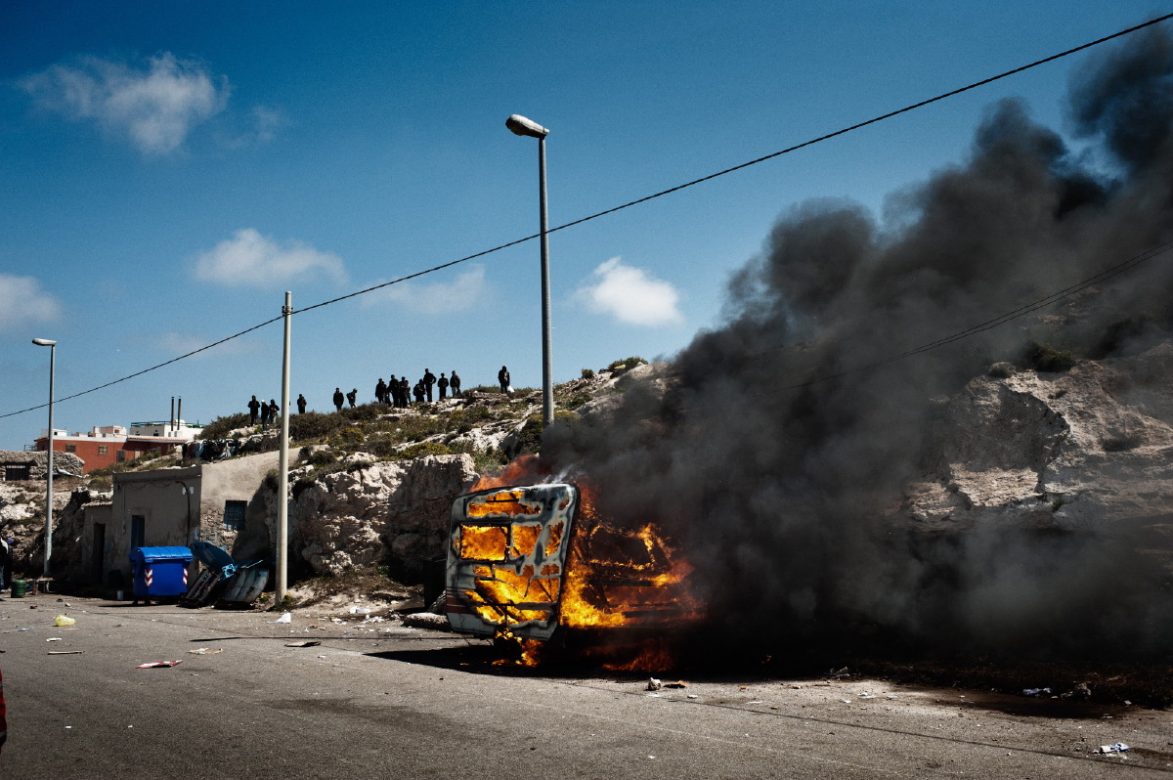
During the protest near the port of Lampedusa island. Italy. Sicily, Lampedusa. April, 2011.

A minor migrant protests, for the detention condition, cutting himself with a piece of glass. Italy. Sicily, Lampedusa. April, 2011.
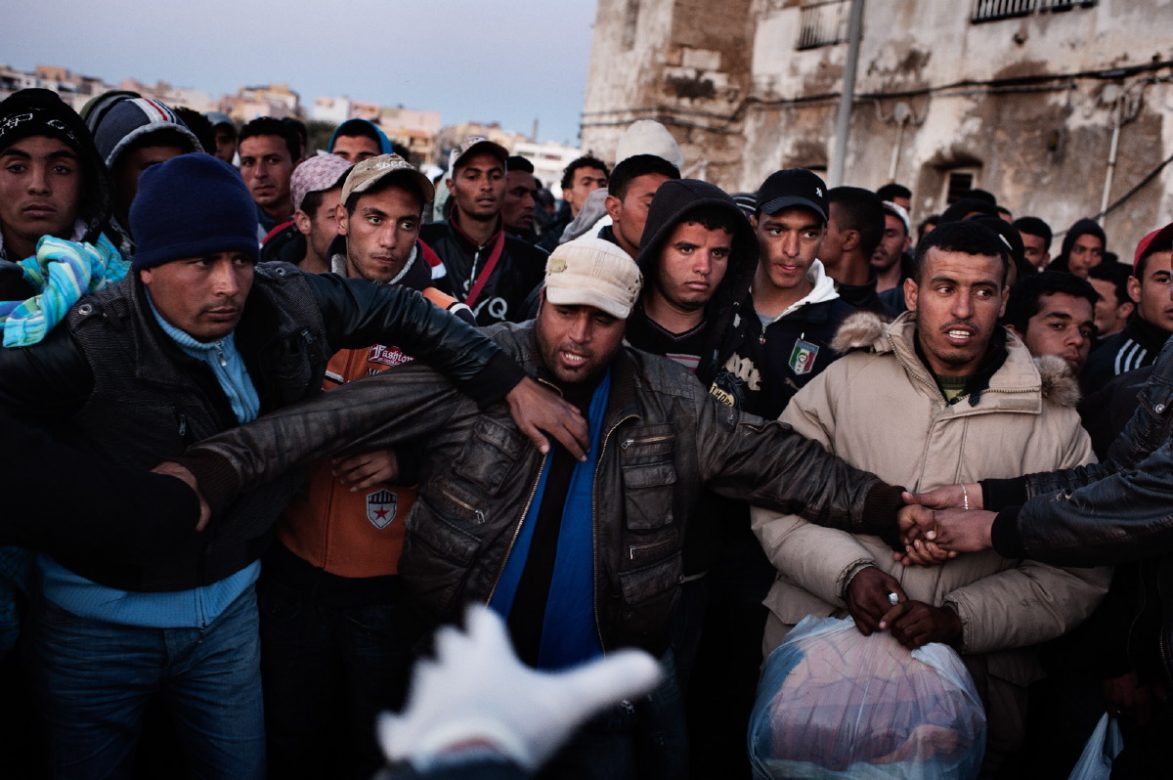
Protests during the transfer of the Tunisian migrants to the mainland. Italy. Sicily, Lampedusa. April, 2011.
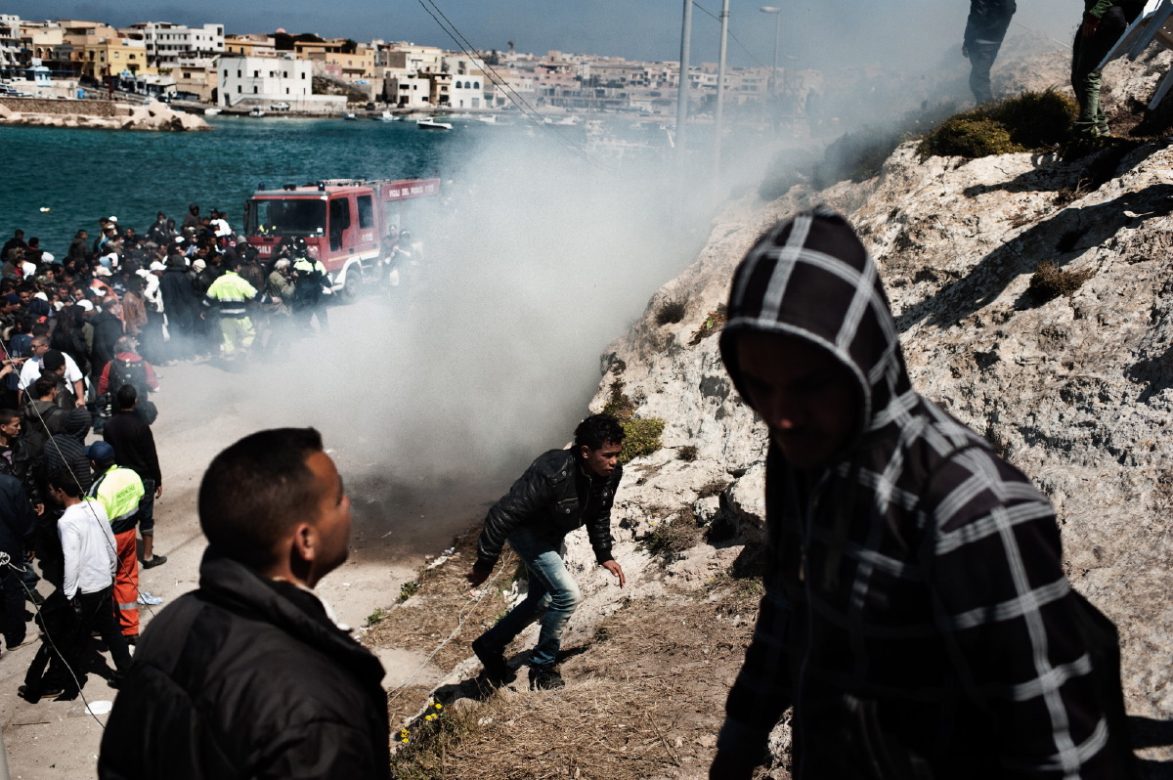
During the protest near the port of Lampedusa island. Italy. Sicily, Lampedusa. April, 2011.
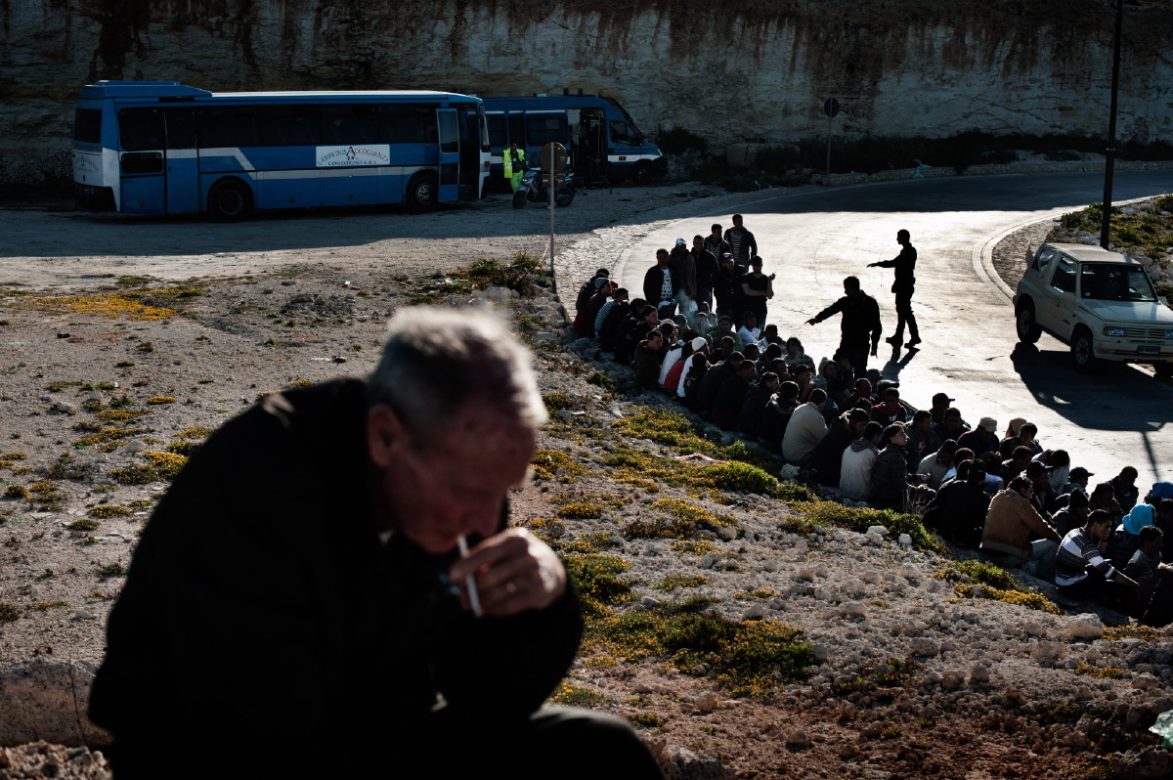
Tunisian waiting boarding on embarkation point in Cala Pisana Port. Italy. Sicily, Lampedusa. April, 2011.

During the transfer of the Tunisian migrants to the mainland. Italy. Sicily, Lampedusa. April, 2011.
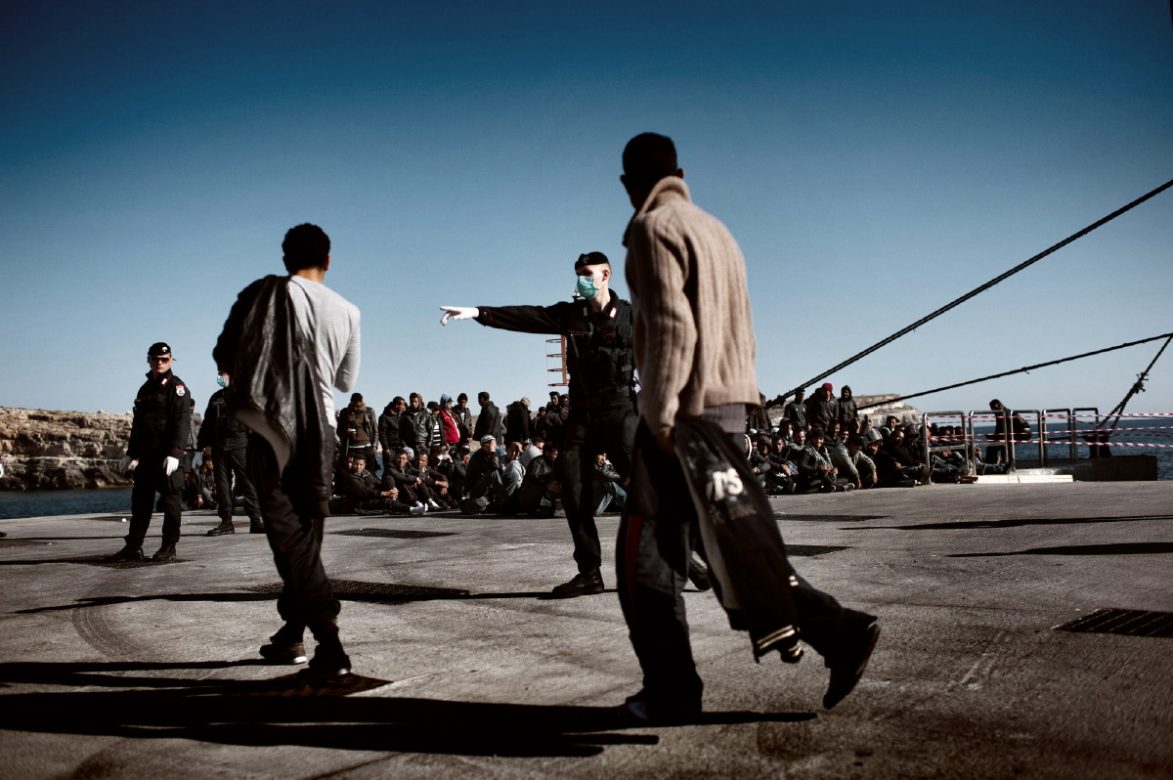
During the transfer of the Tunisian migrants to the mainland. Italy. Sicily, Lampedusa. April, 2011.

Migrants coming from Tunisia. Italy. Sicily, Lampedusa. April, 2011.
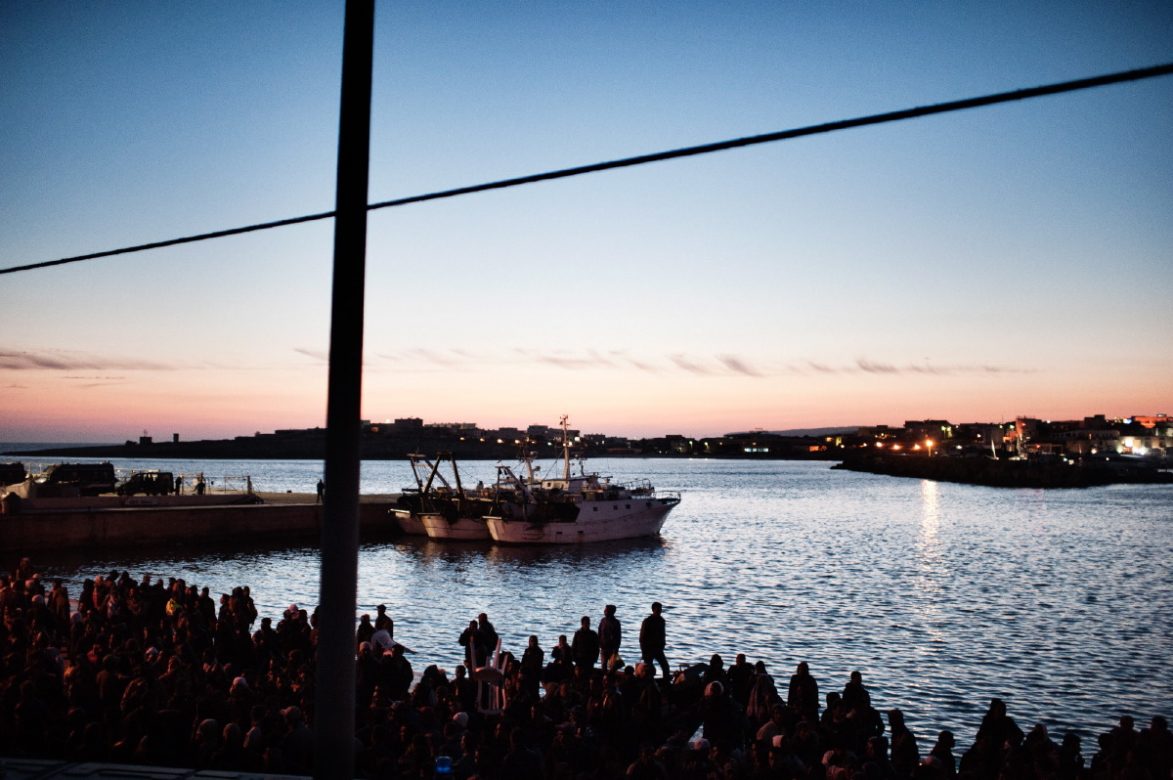
Waiting the transfer of the Tunisian migrants to the mainland. Italy. Sicily, Lampedusa. April, 2011.
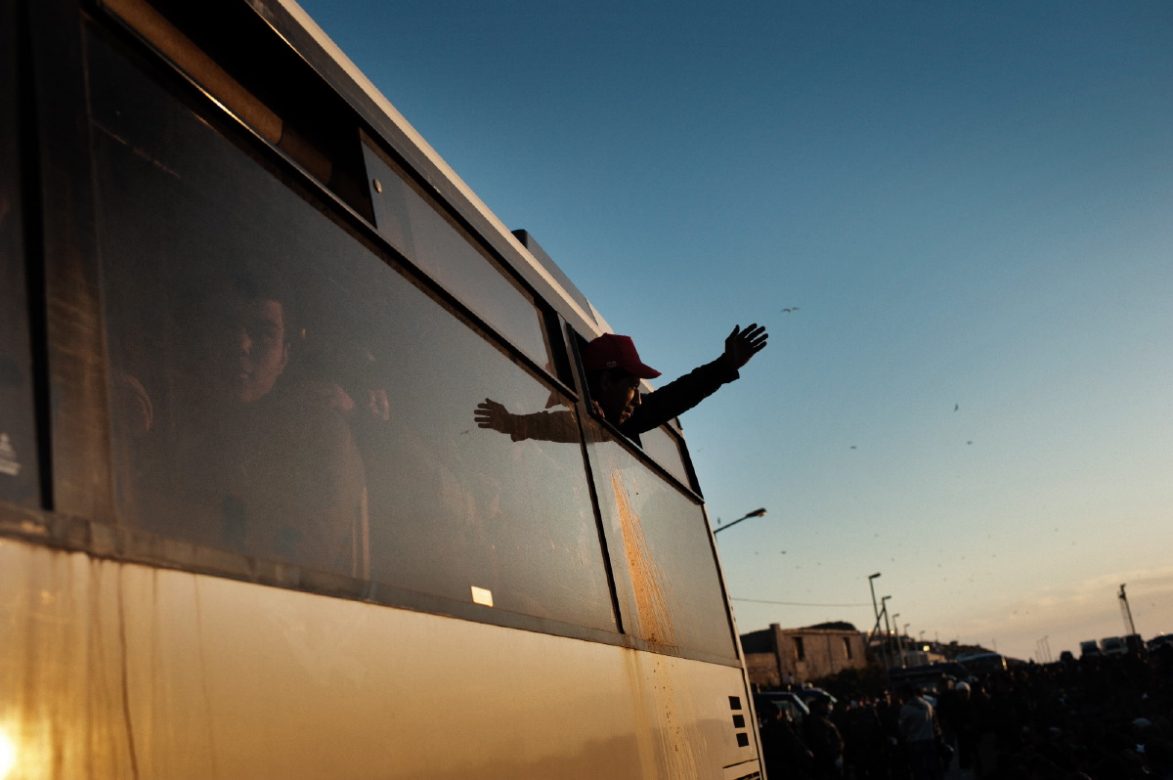
During the transfer of the Tunisian migrants to the mainland. Italy. Sicily, Lampedusa. April, 2011.
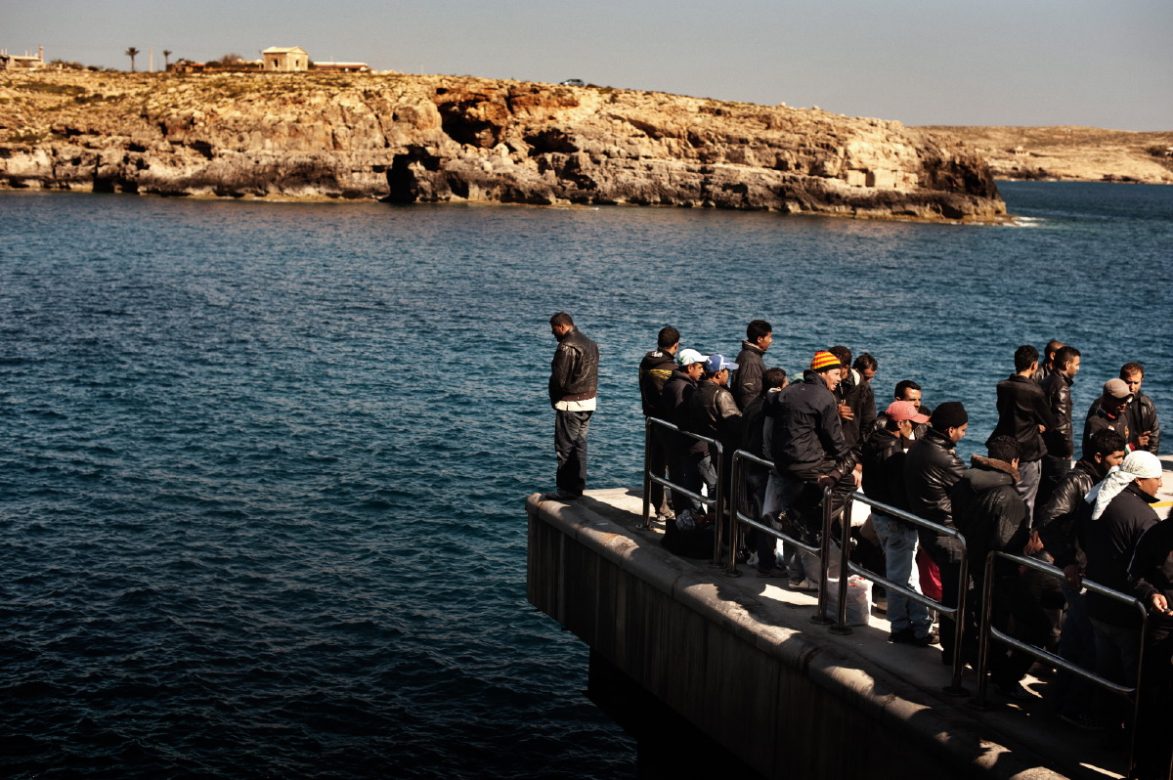
Waiting the transfer of the Tunisian migrants to the mainland. Italy. Sicily, Lampedusa. April, 2011.
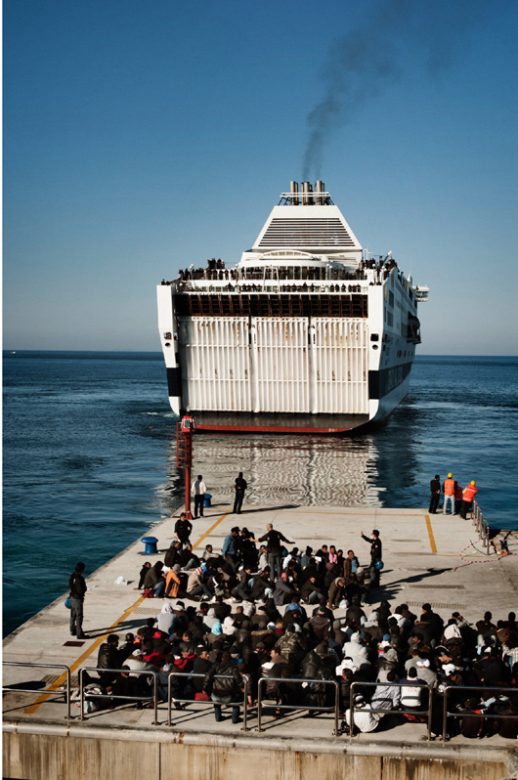
Tunisian waiting boarding on embarkation point in Cala Pisana Port. Italy. Sicily, Lampedusa. April, 2011.
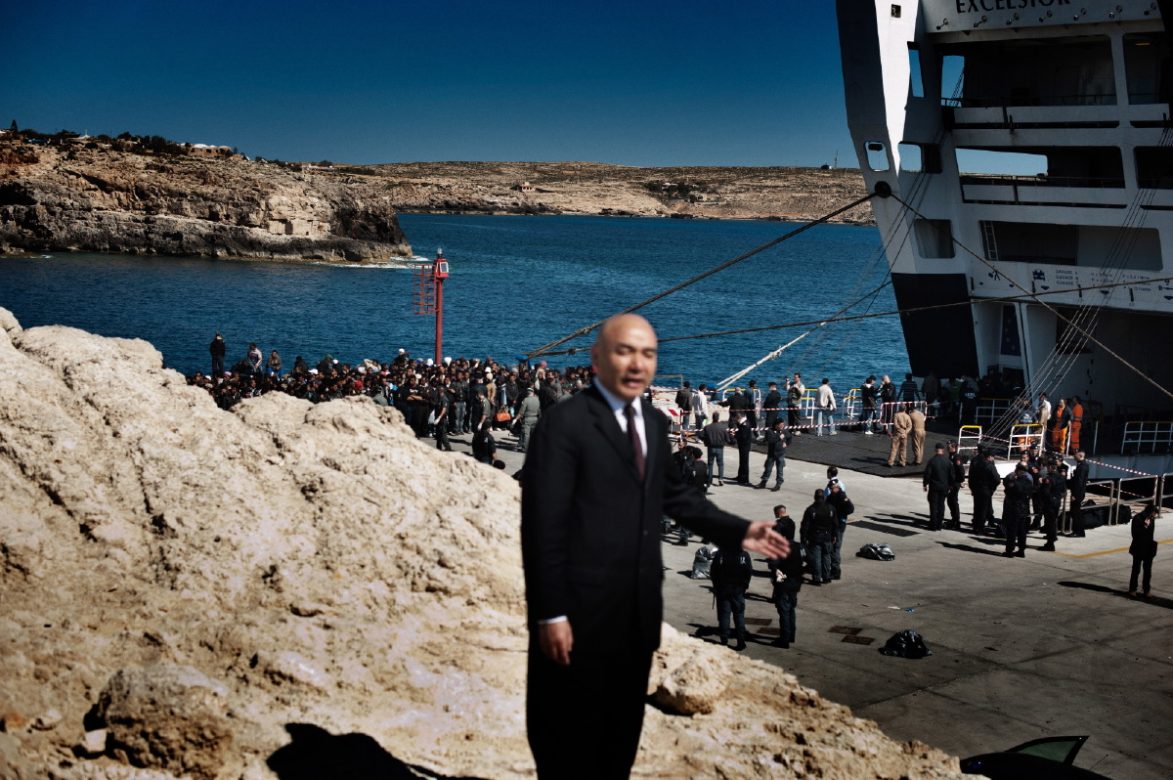
Japan reporter during the transfer of the Tunisian migrants to the mainland. Italy. Sicily, Lampedusa. April, 2011.
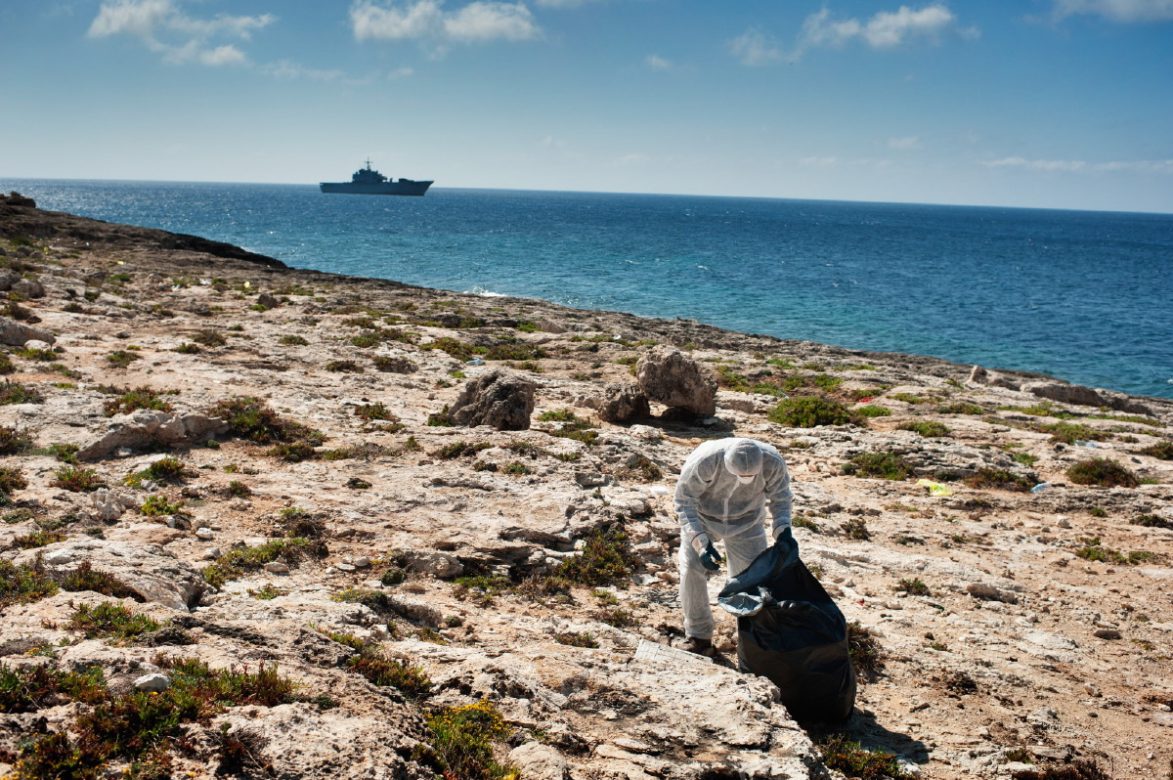
The cleaning operation after the migrants transfer to the mainland. Italy. Sicily, Lampedusa. April, 2011.













